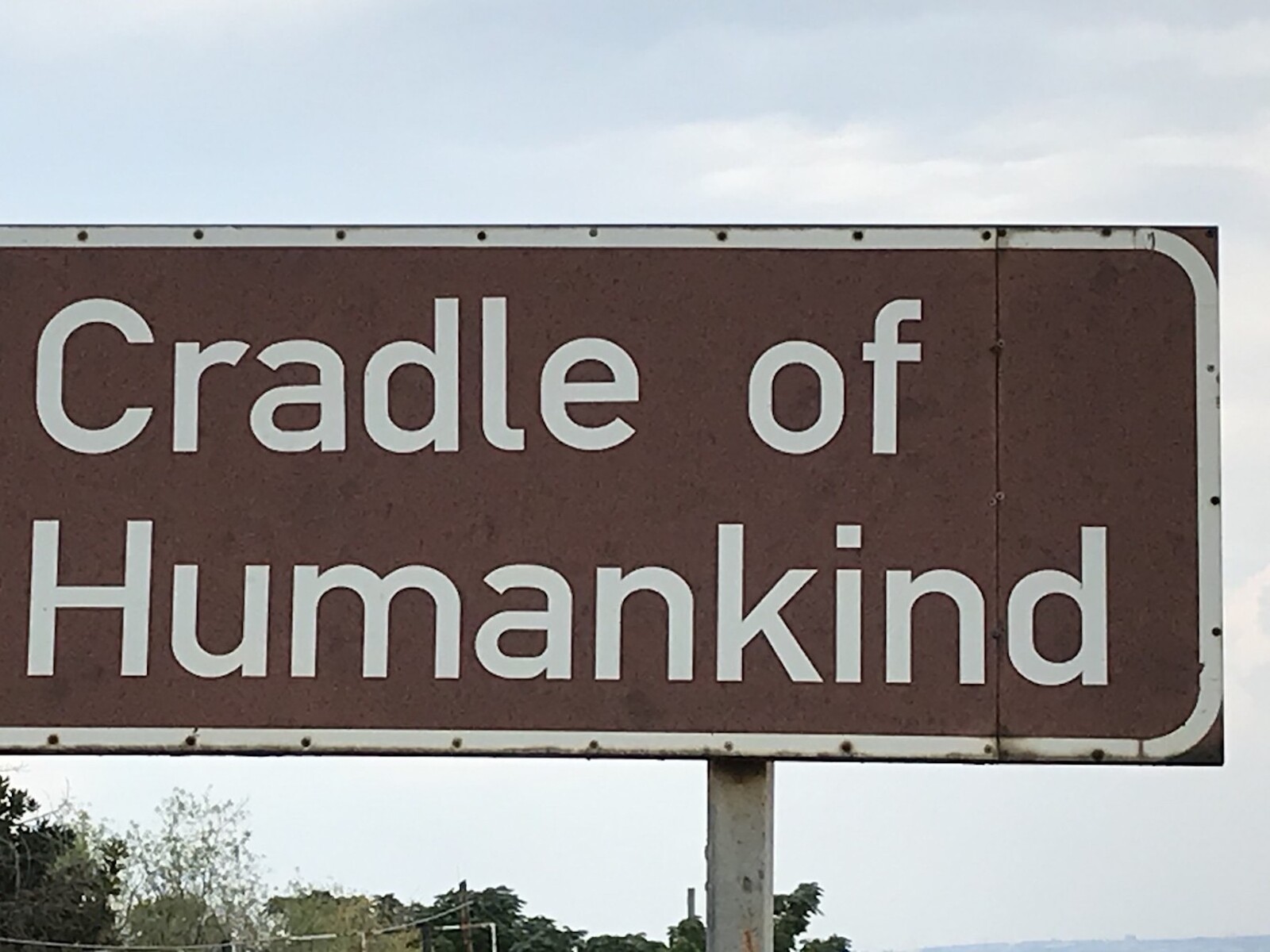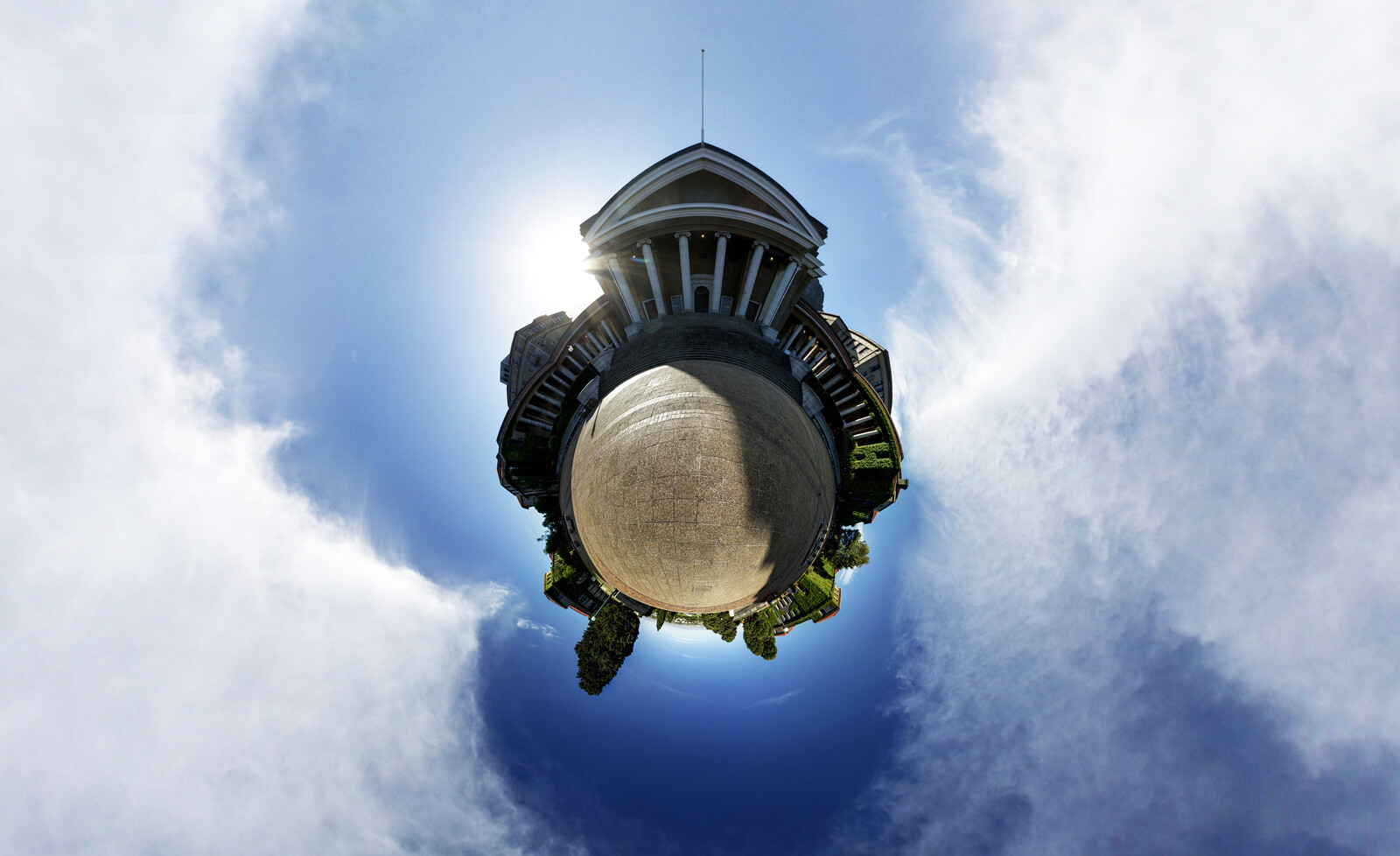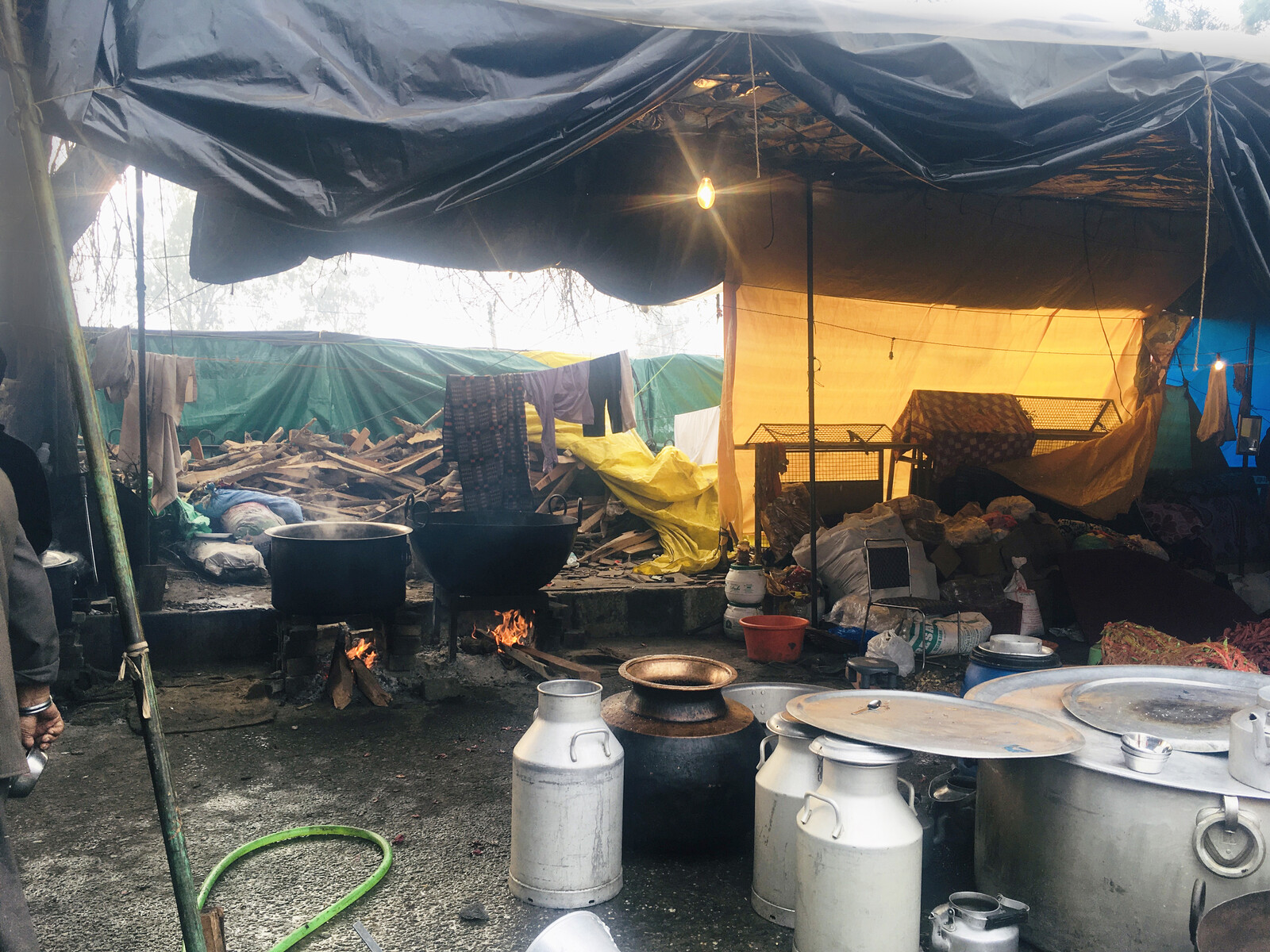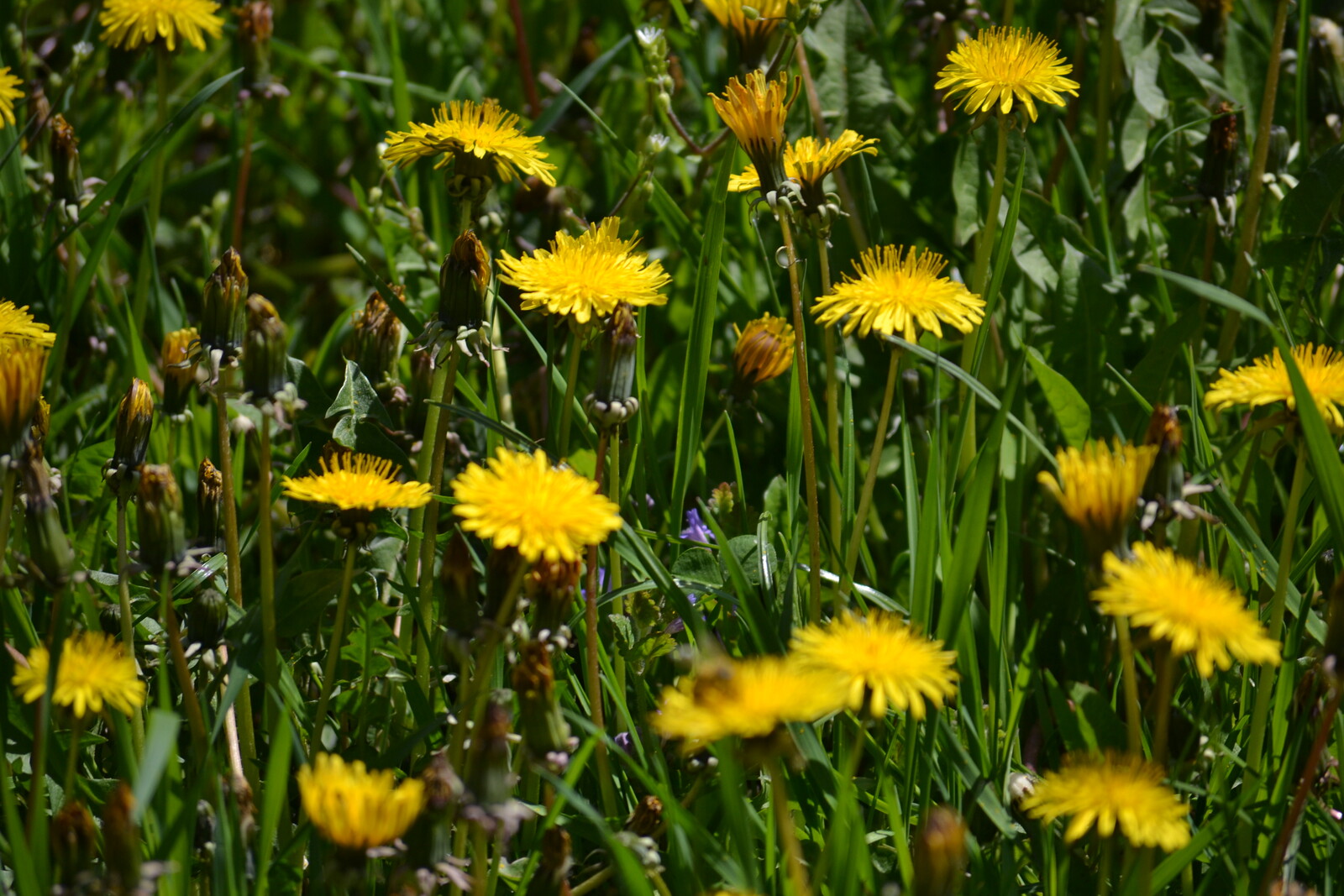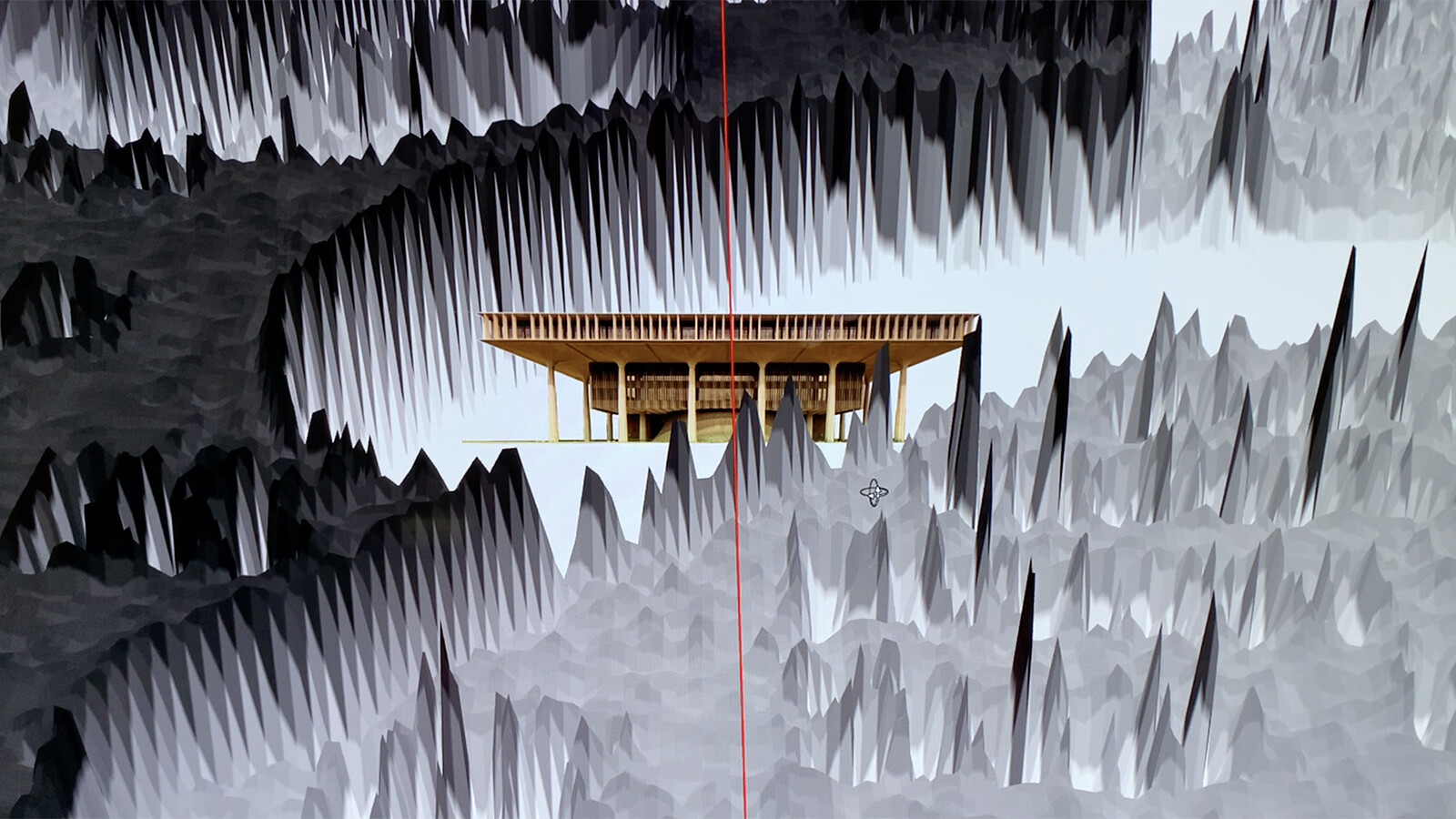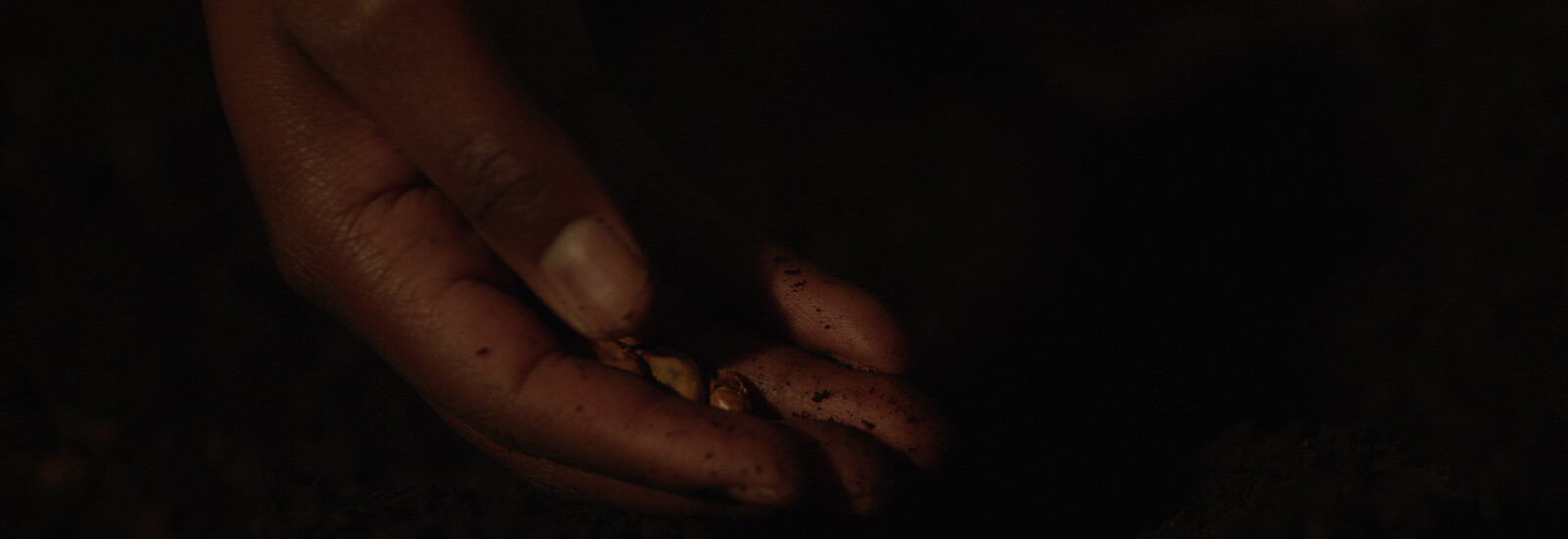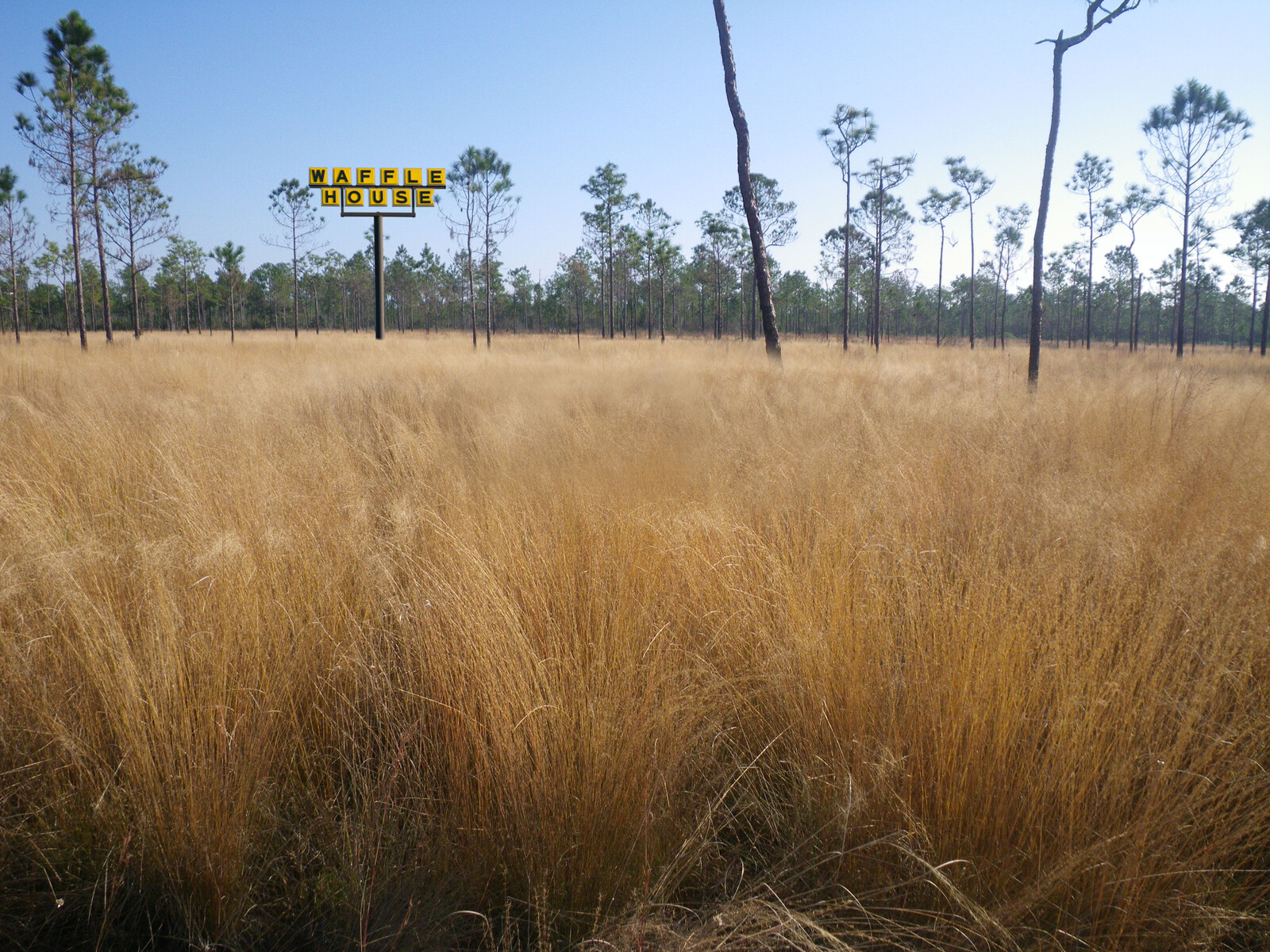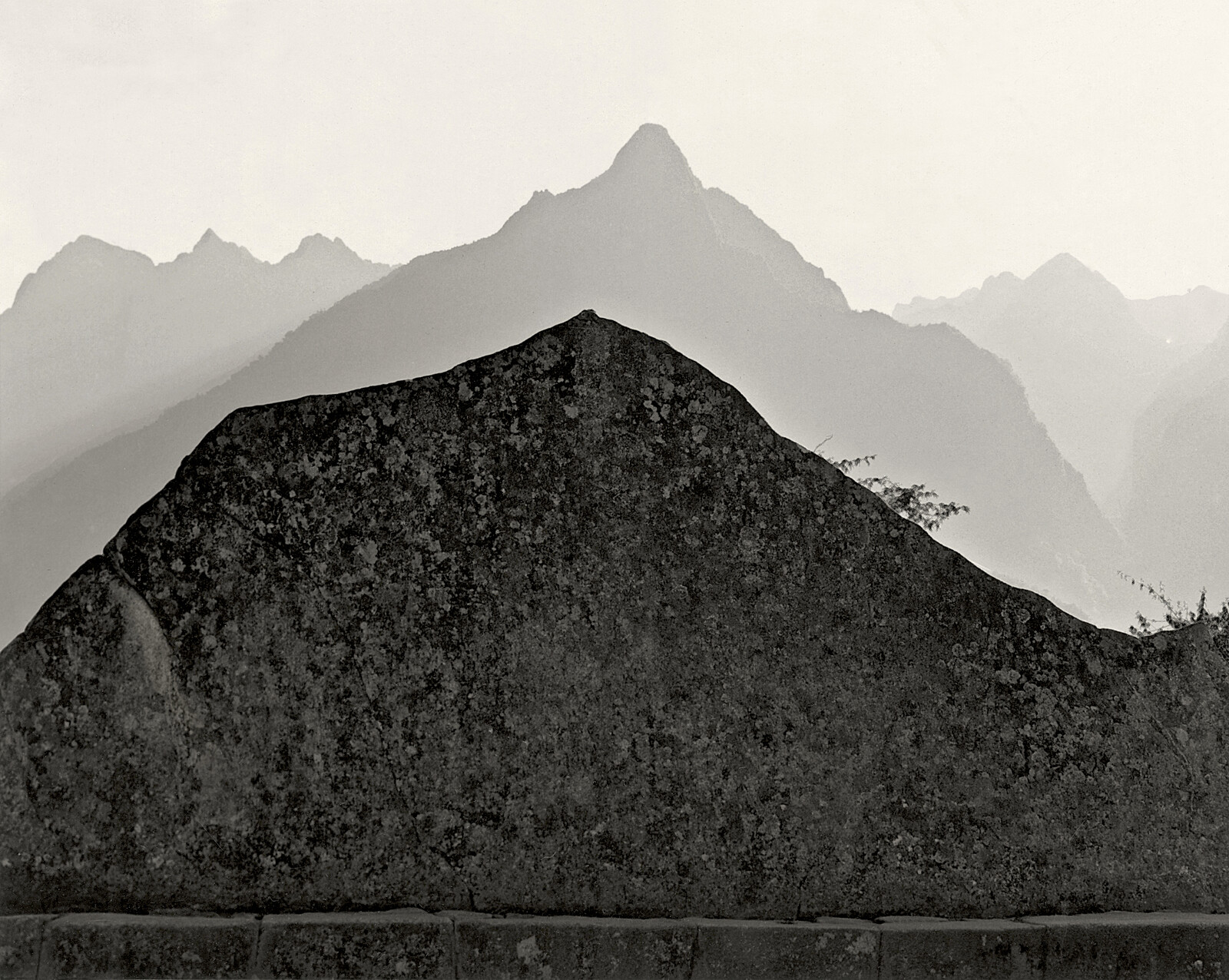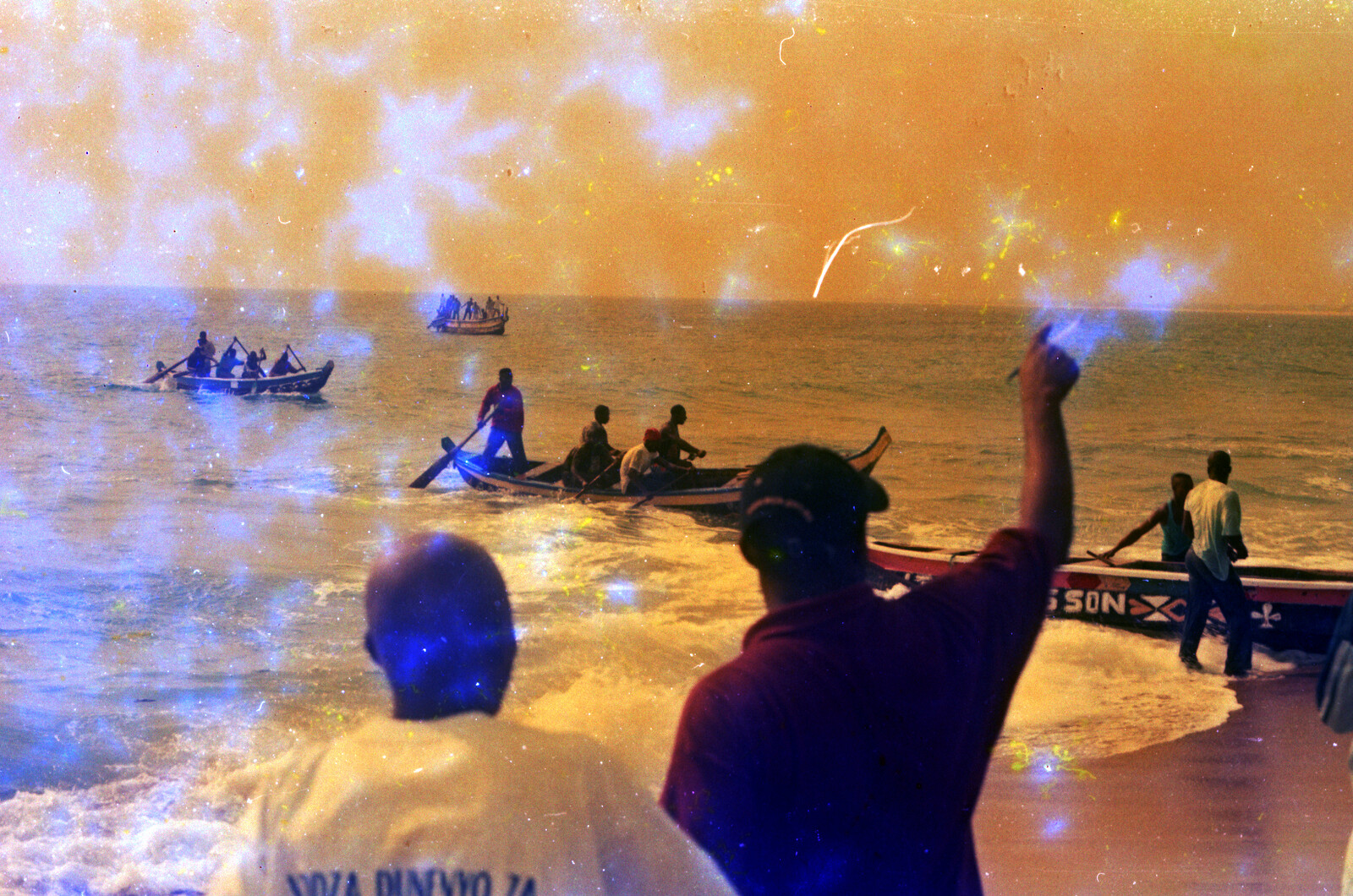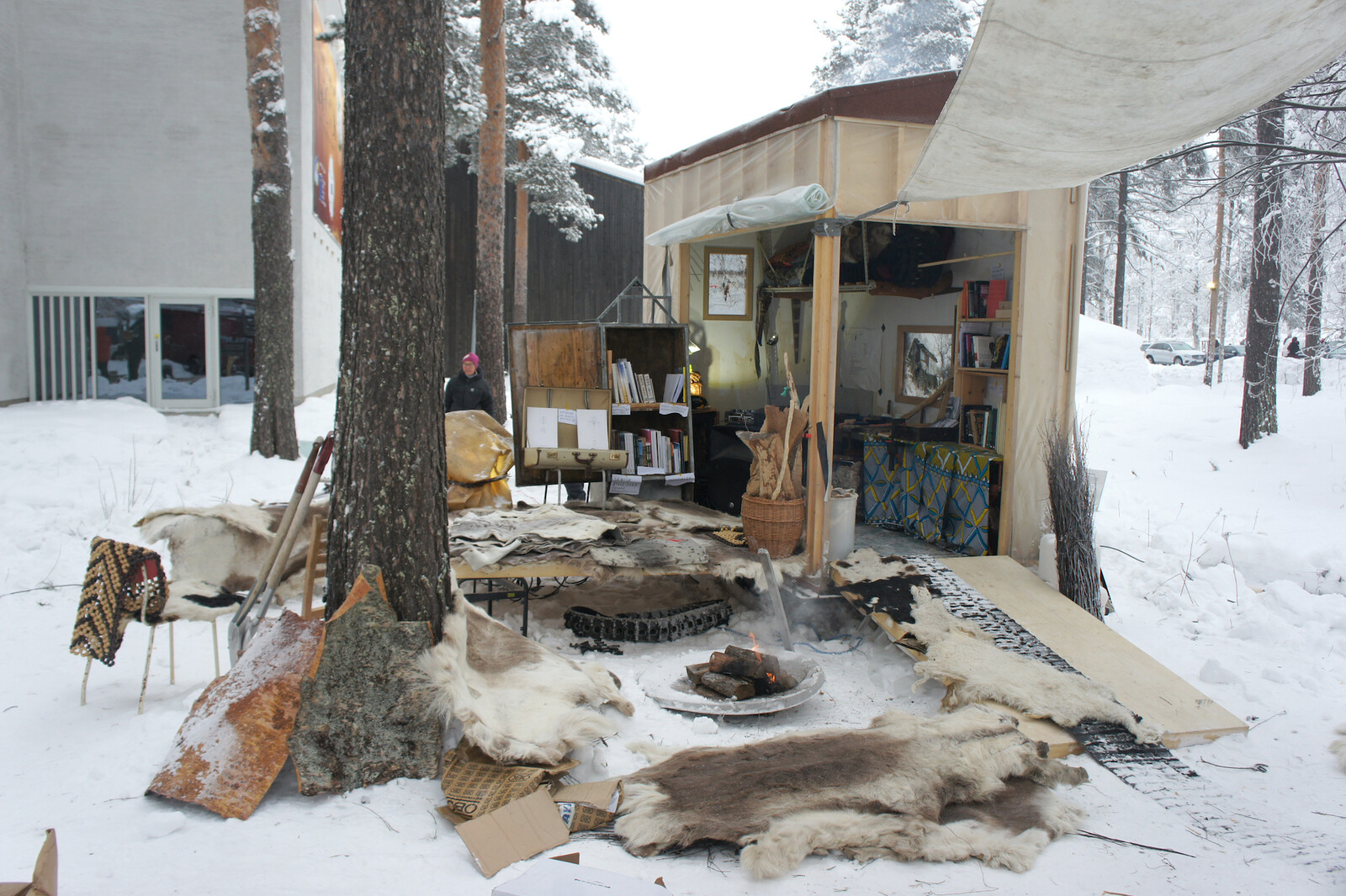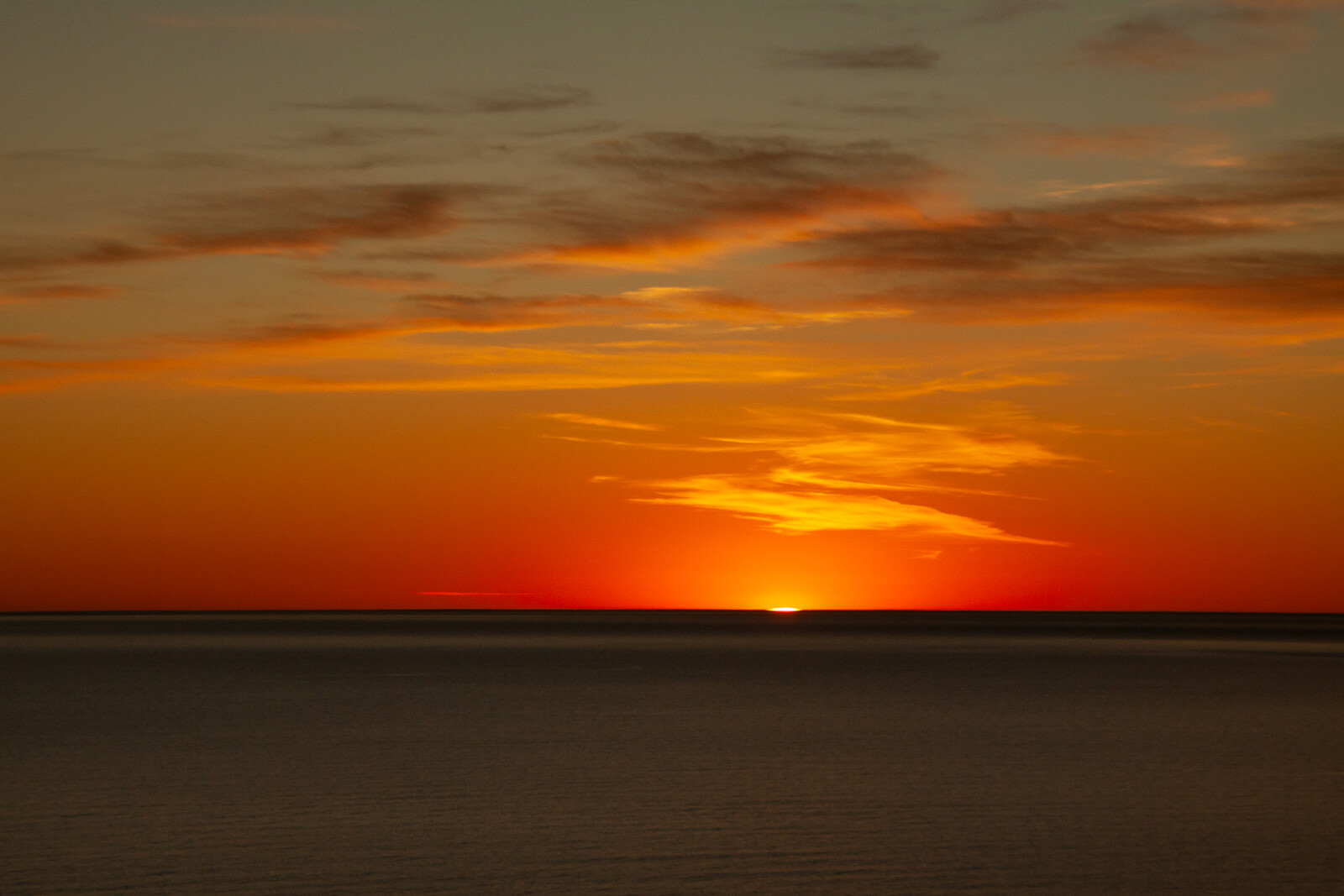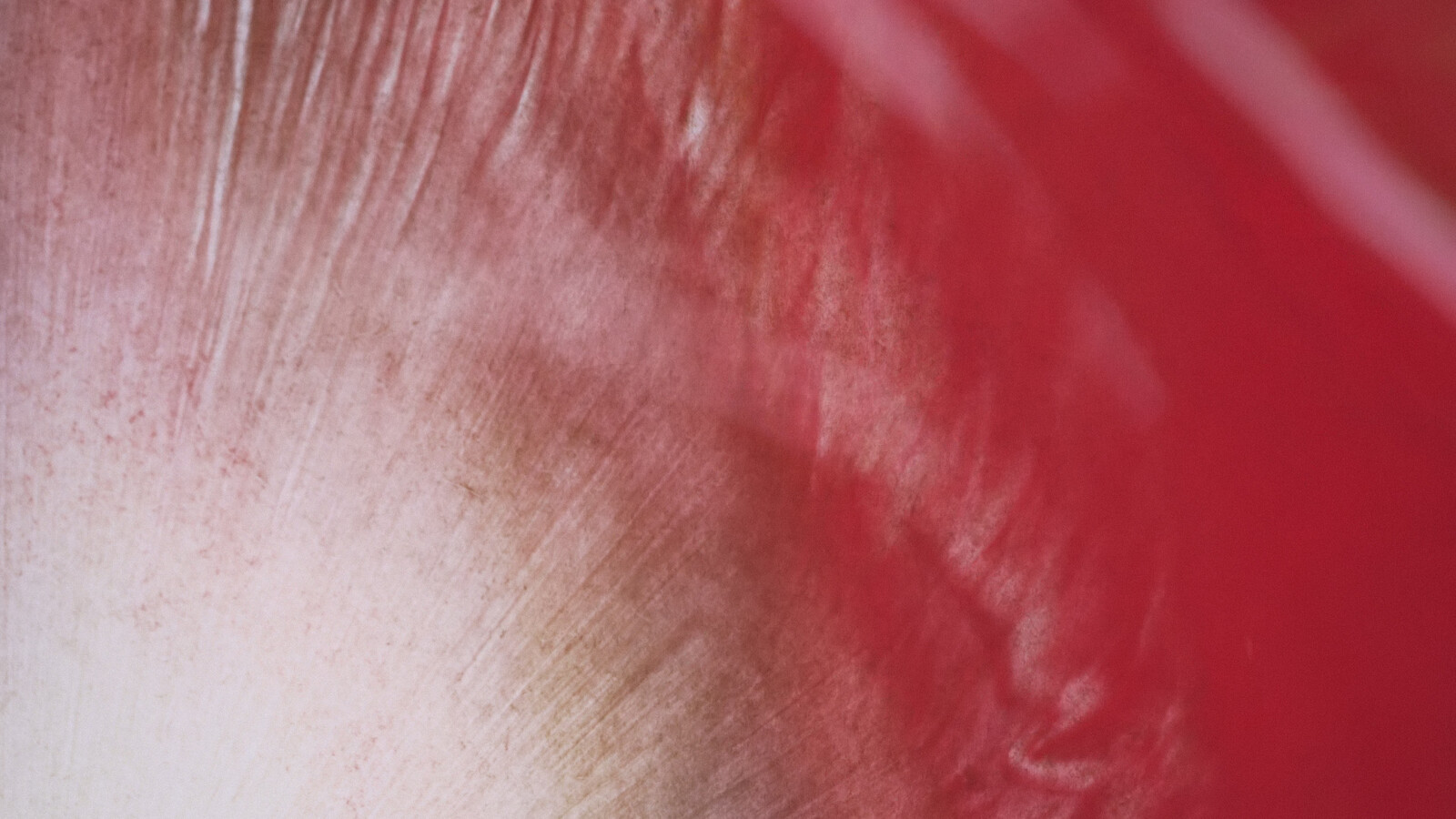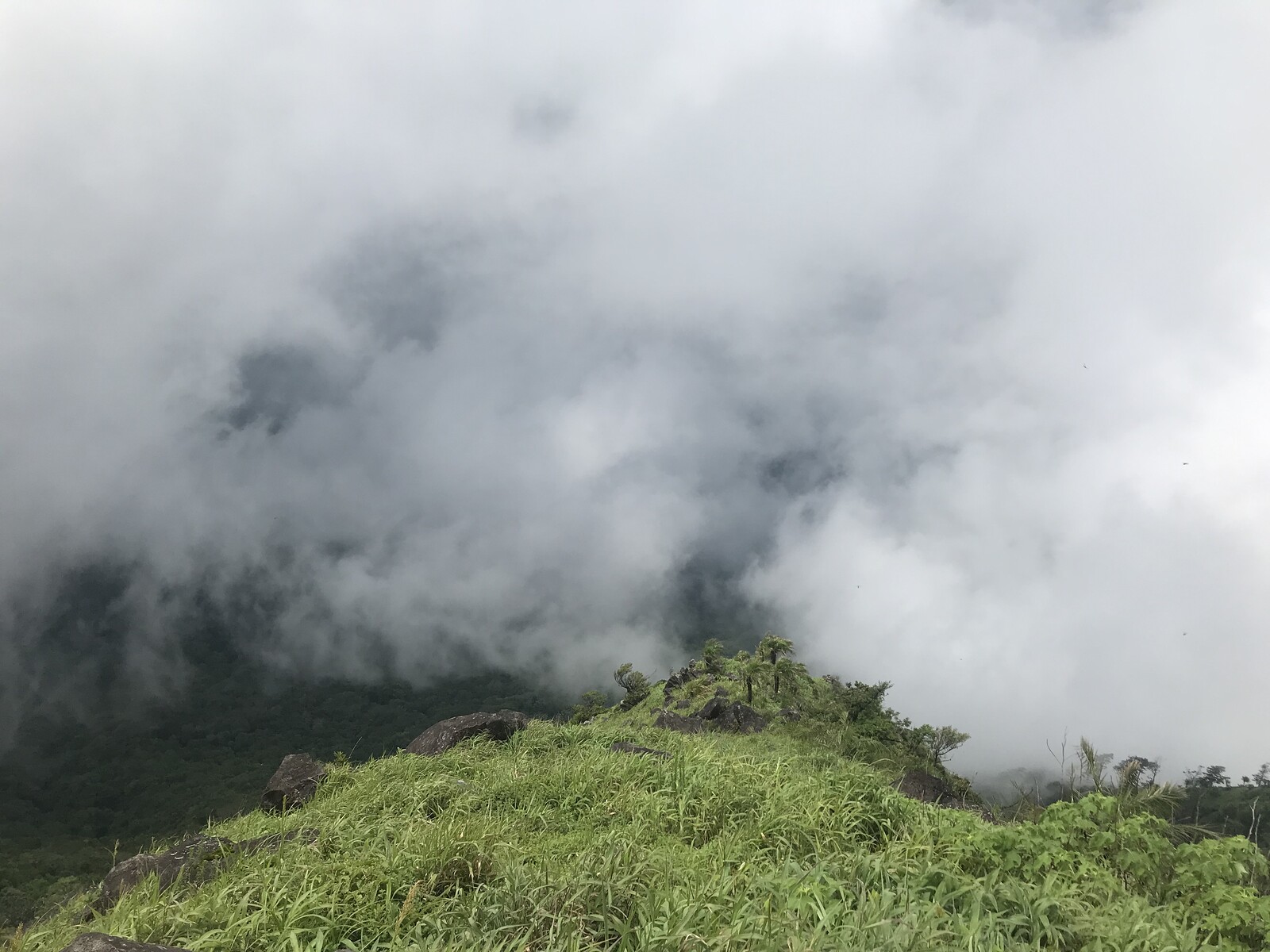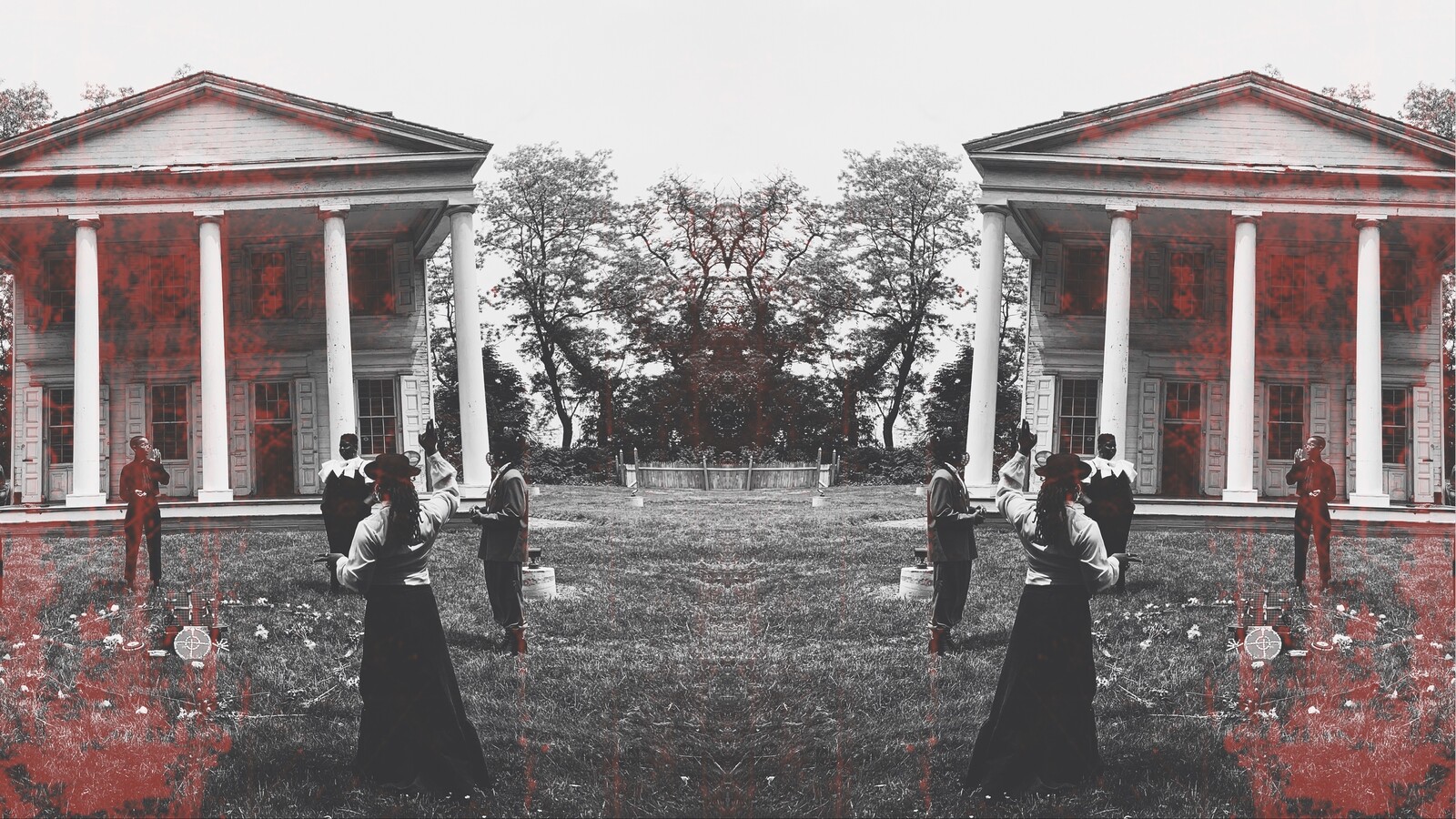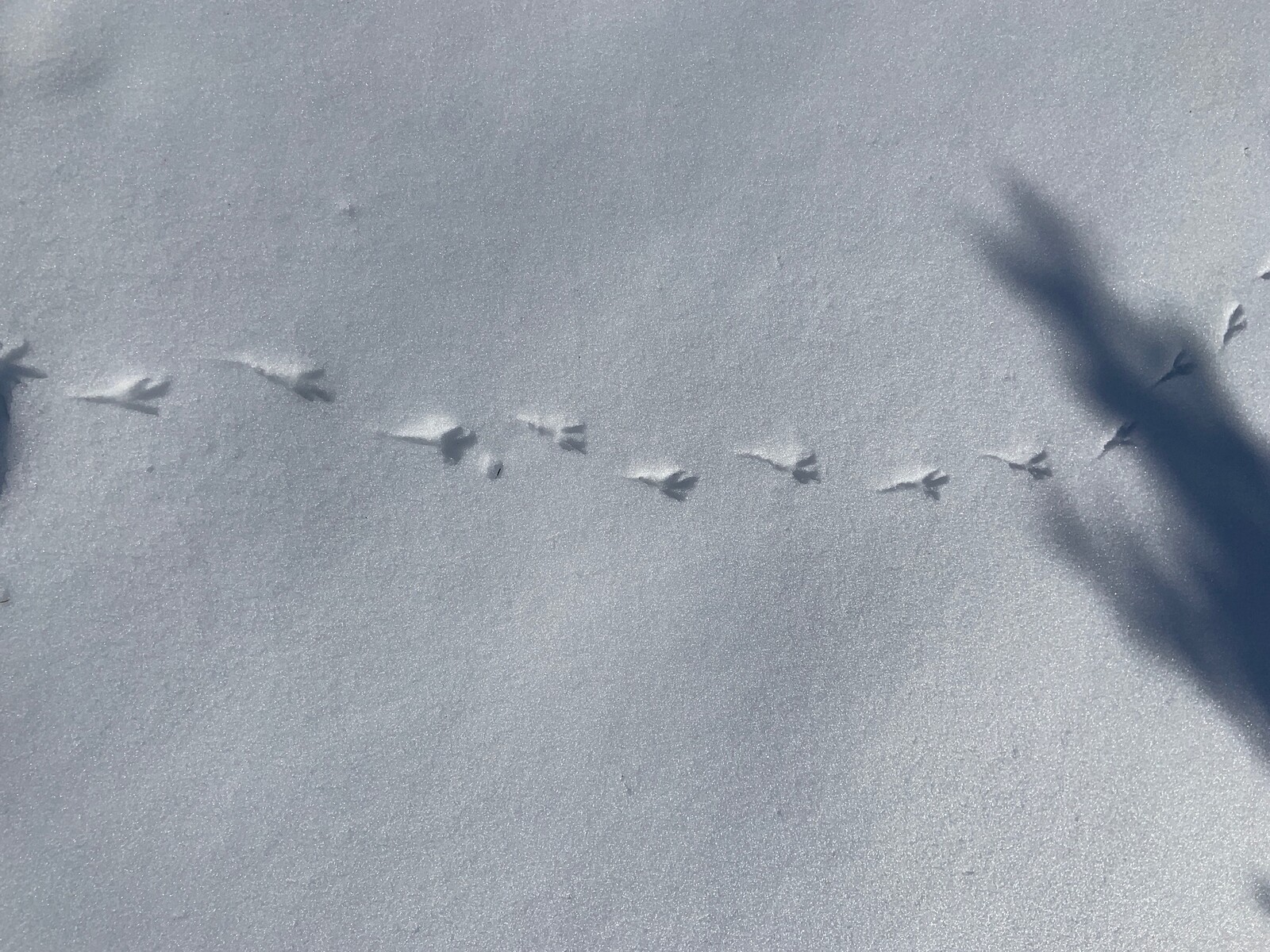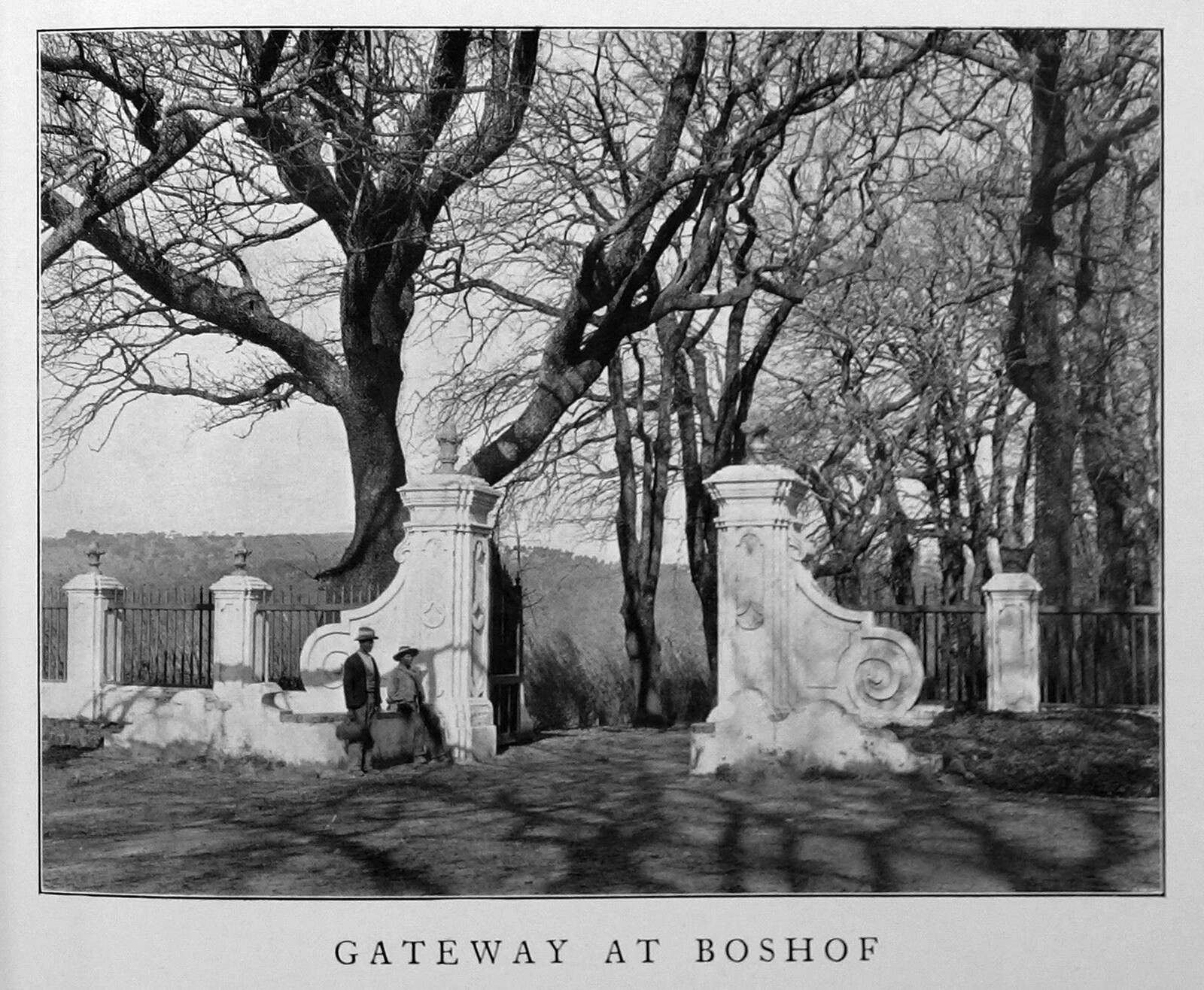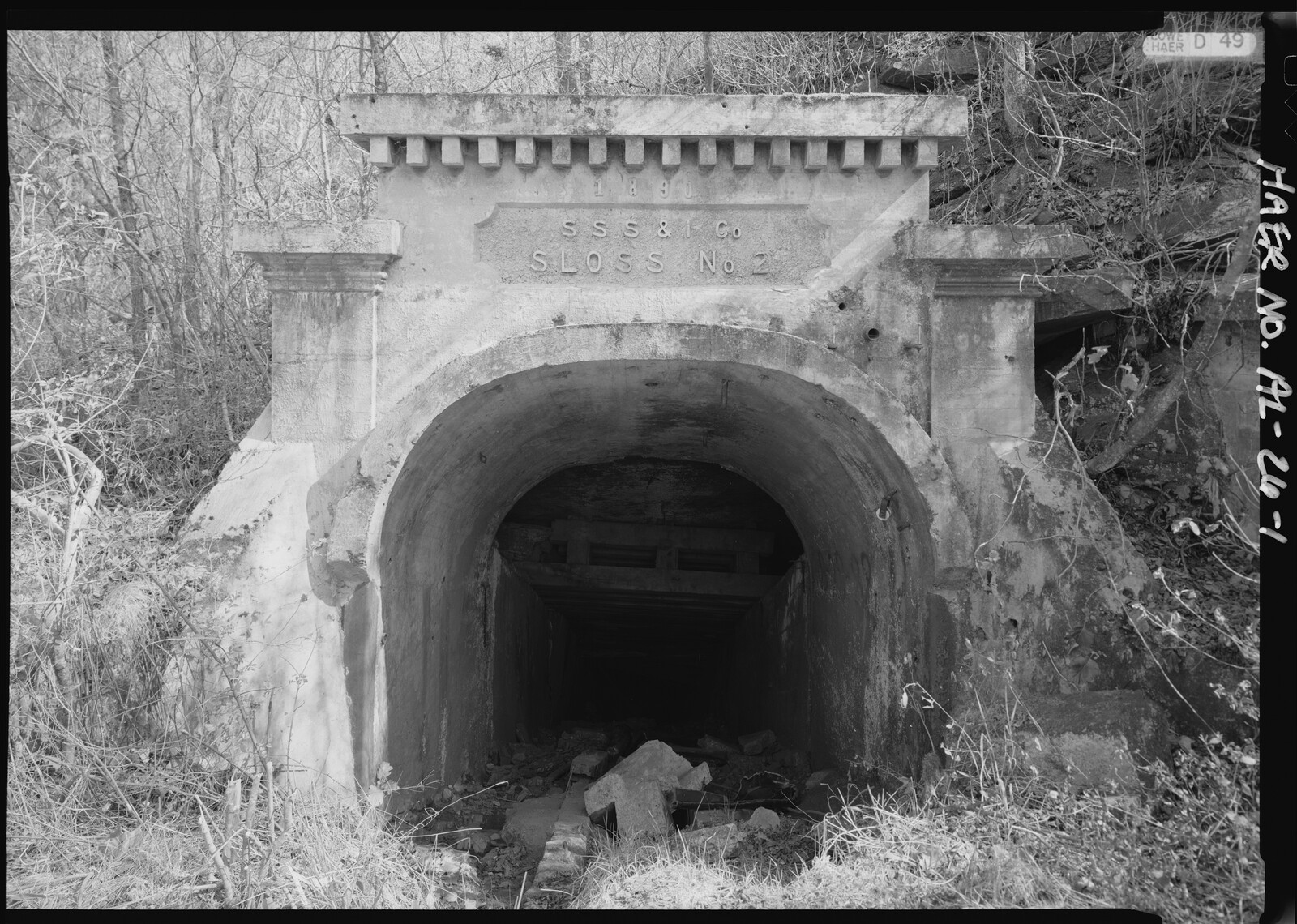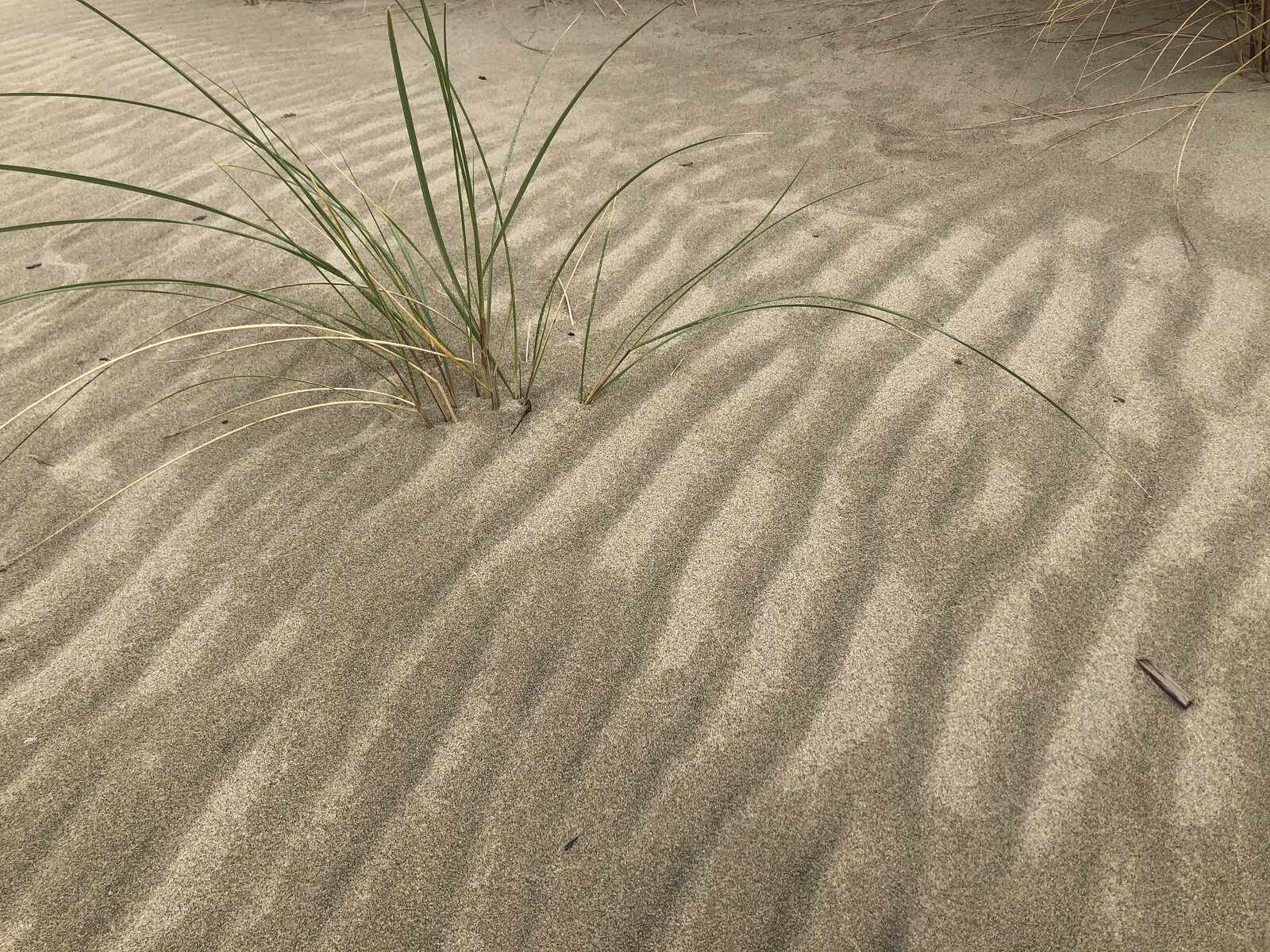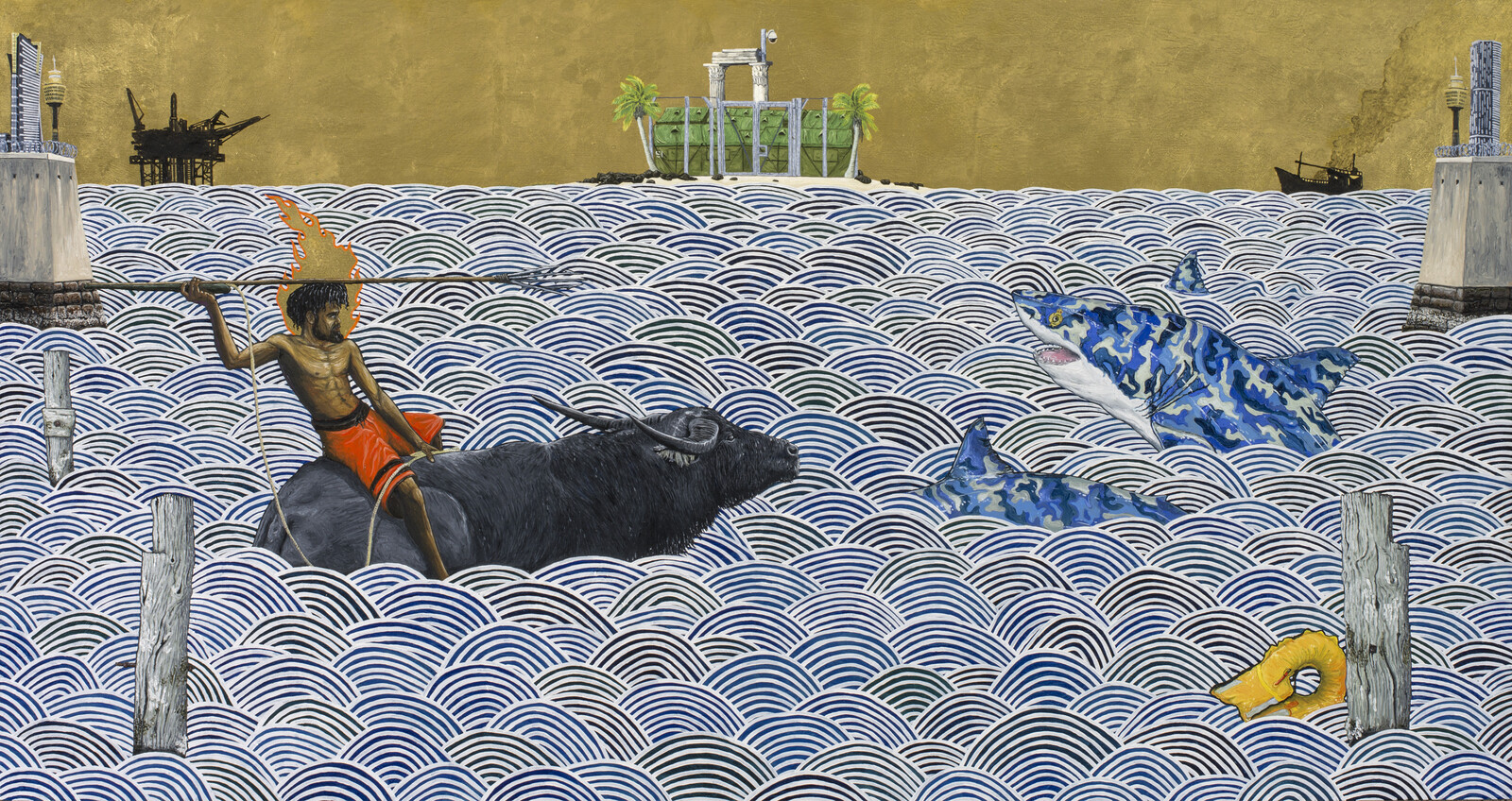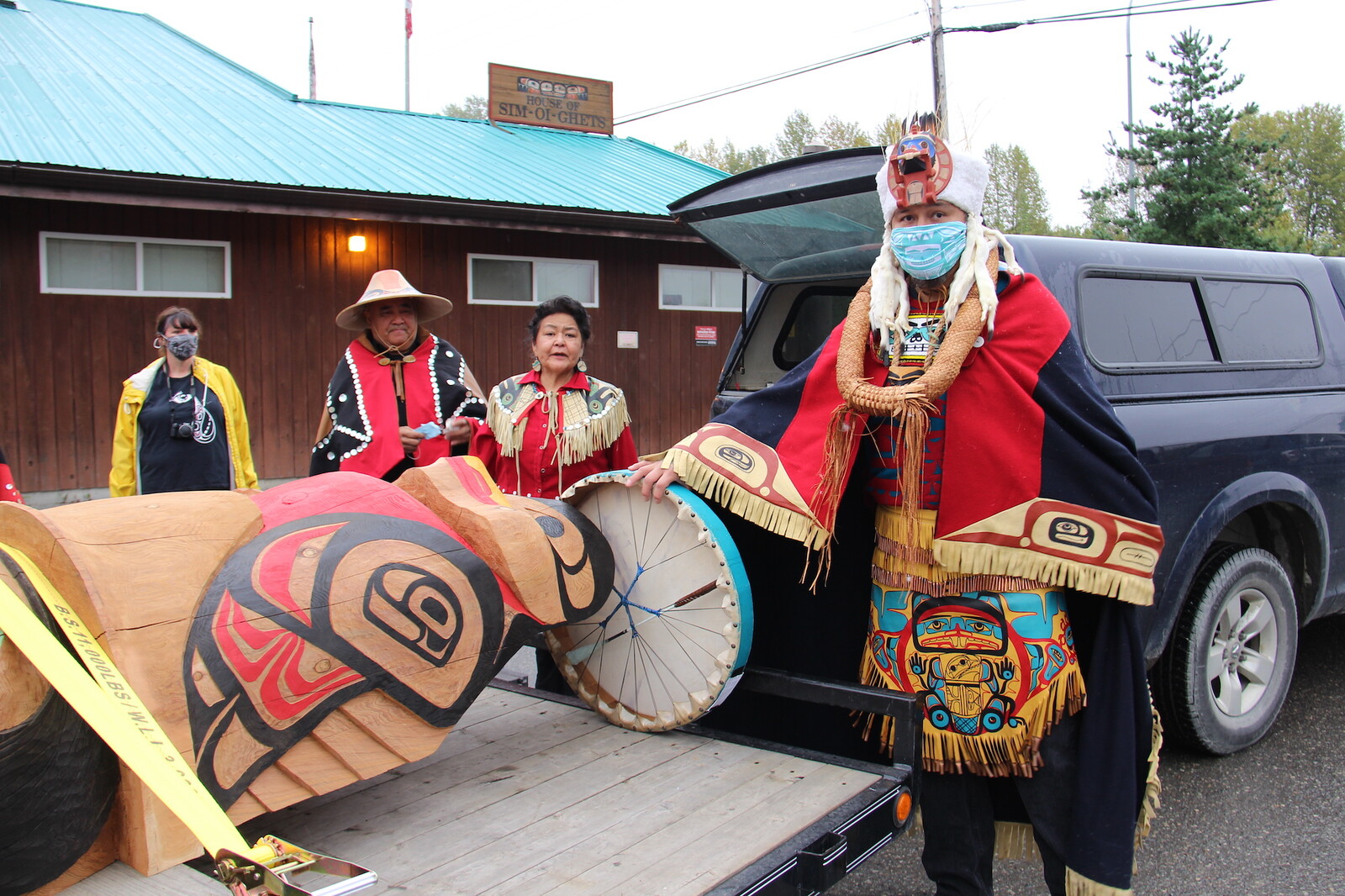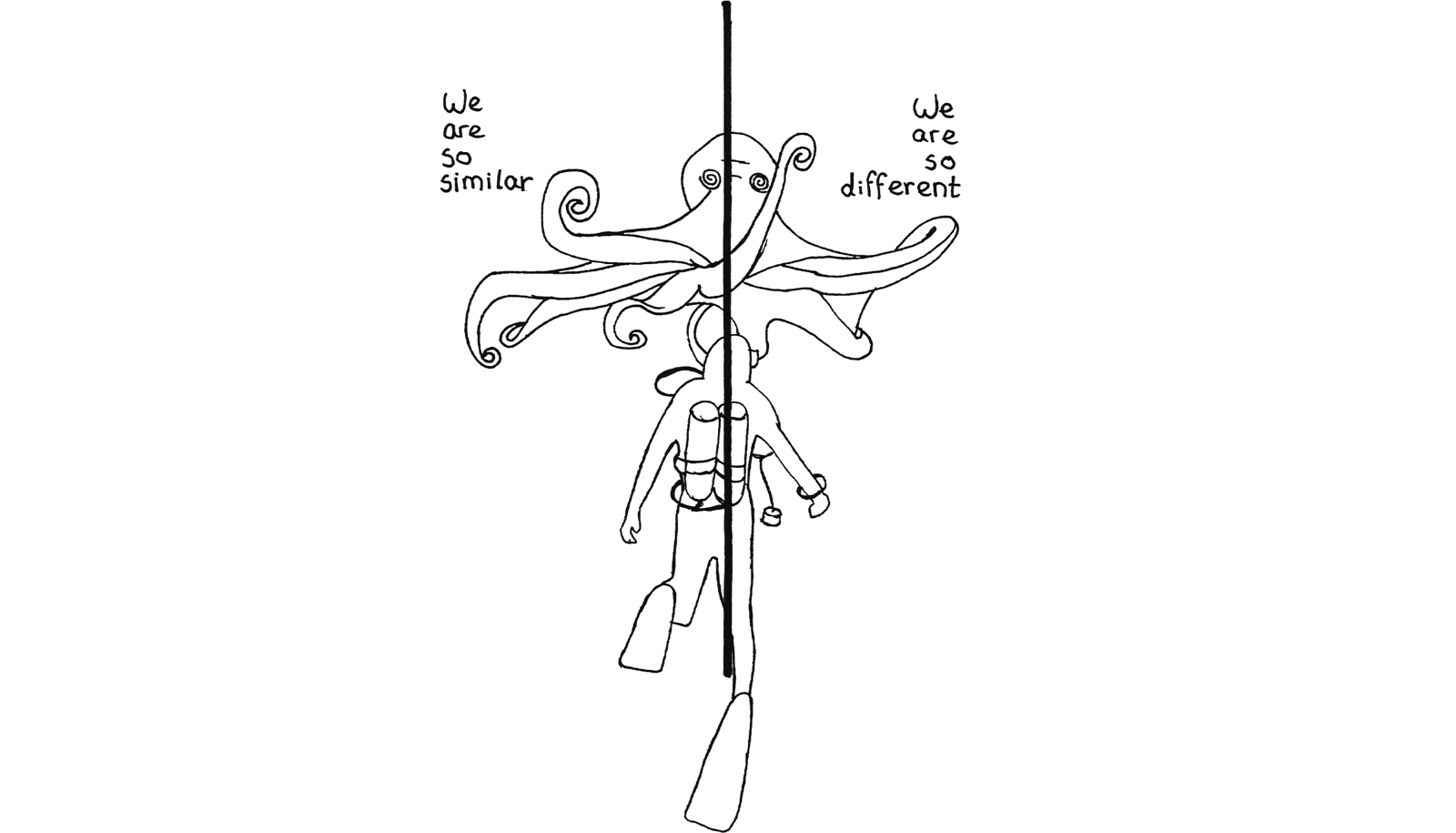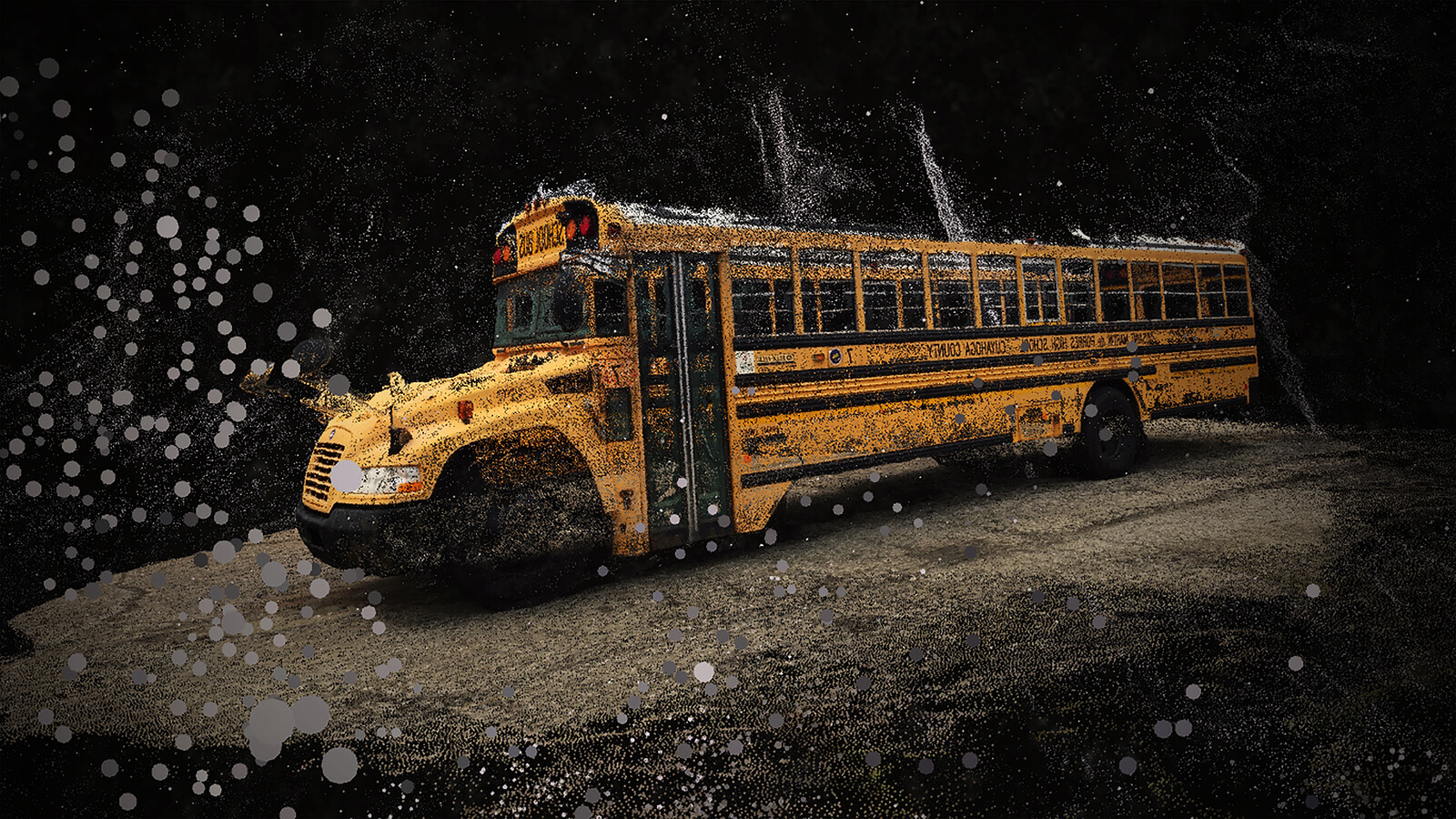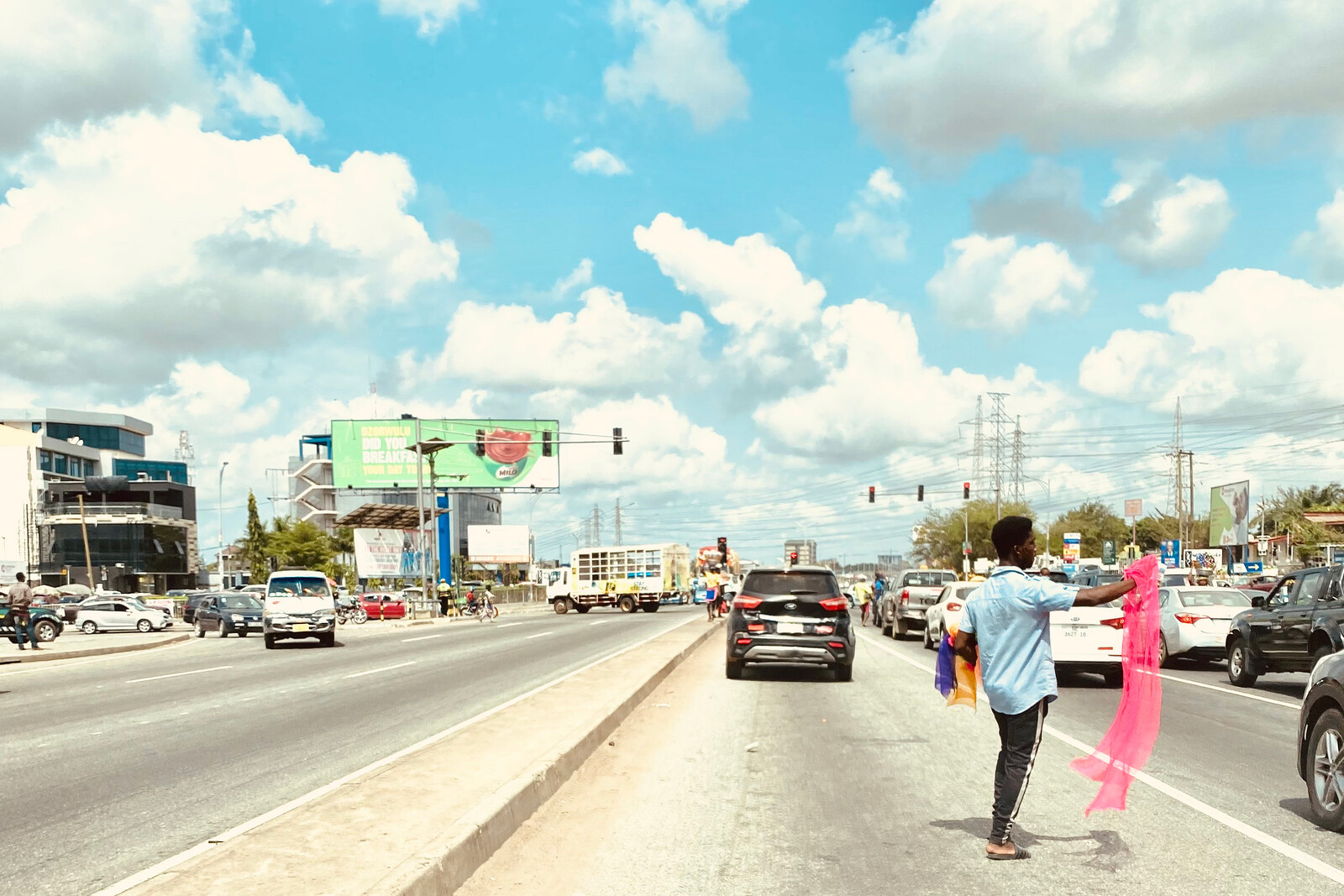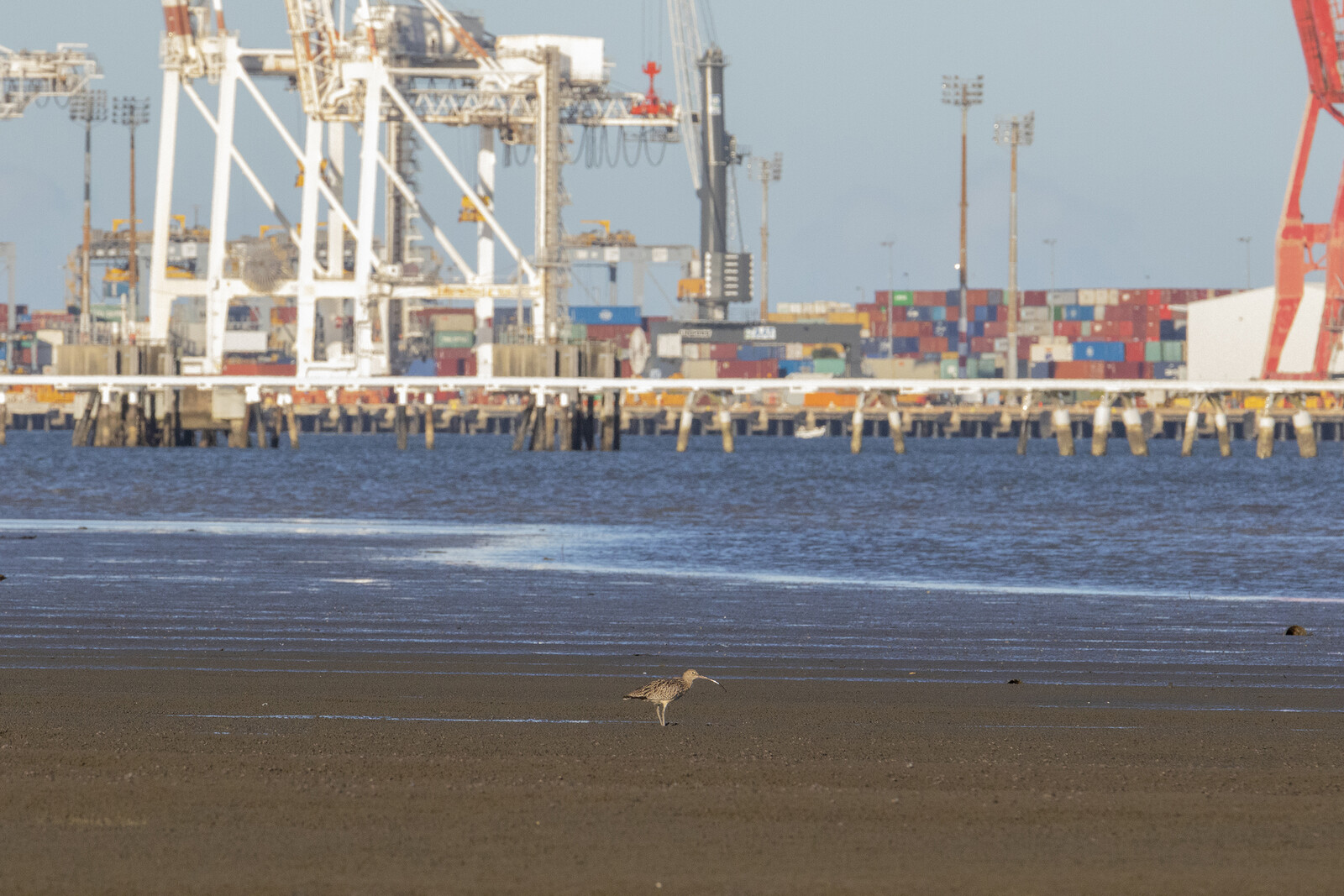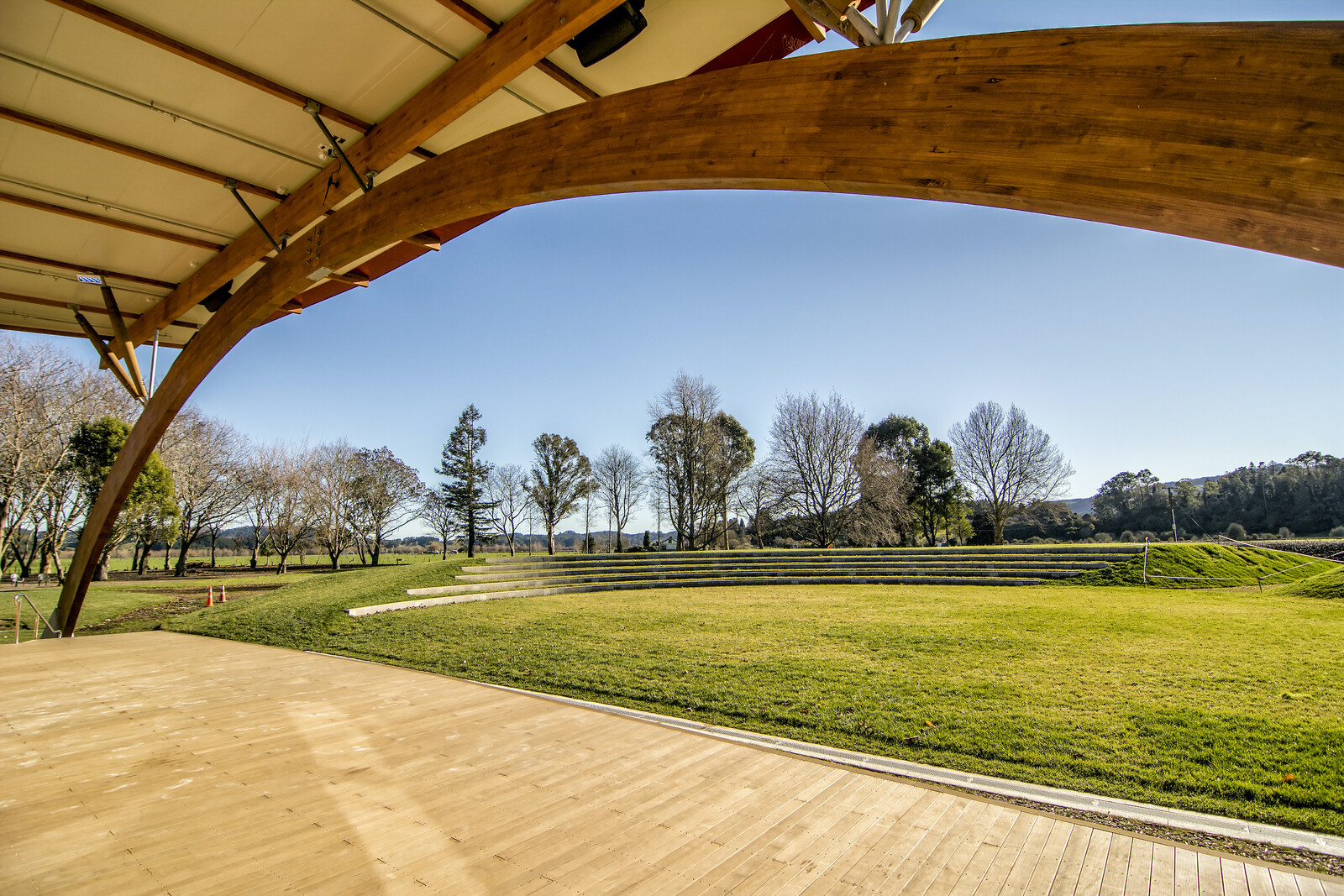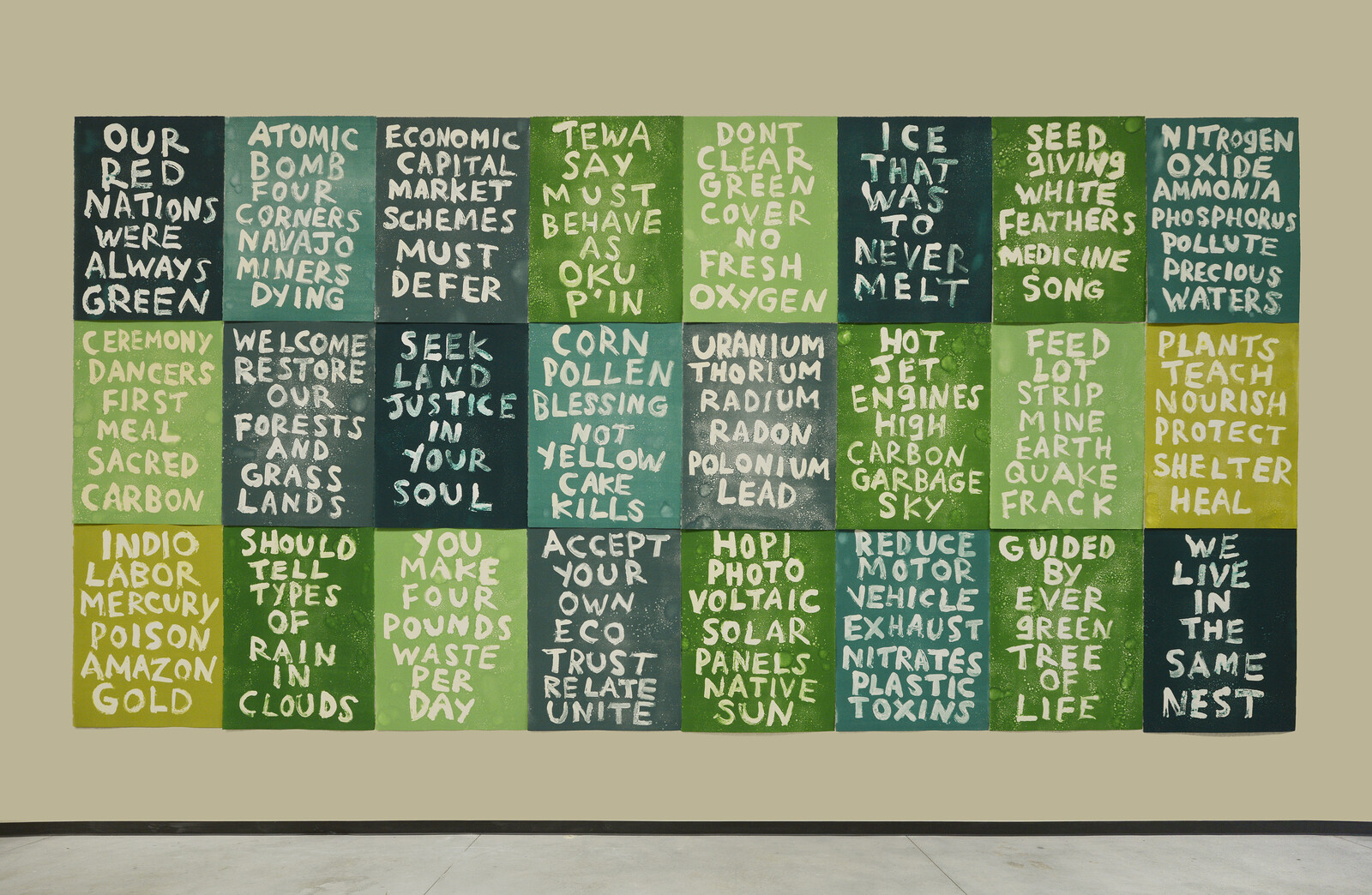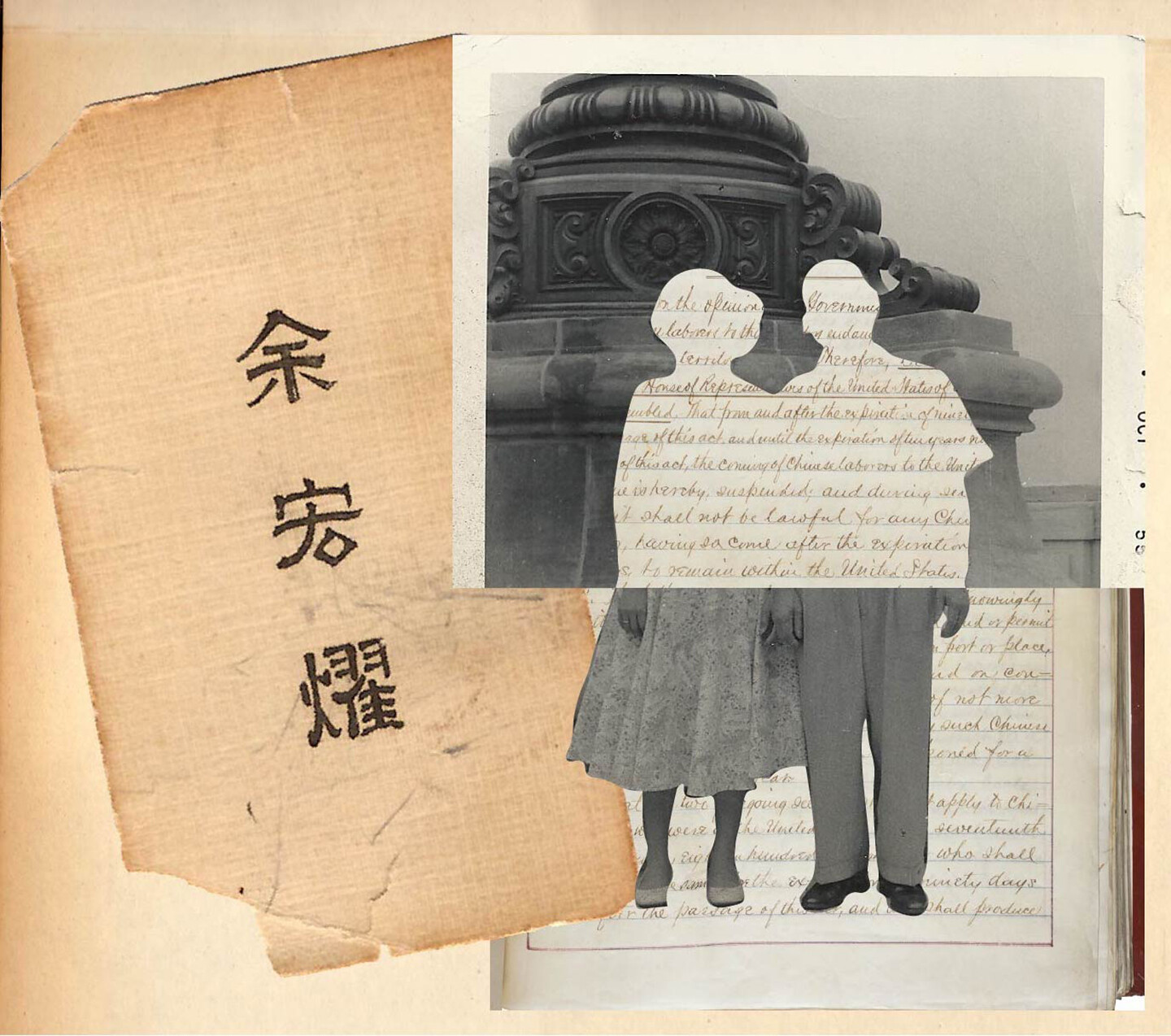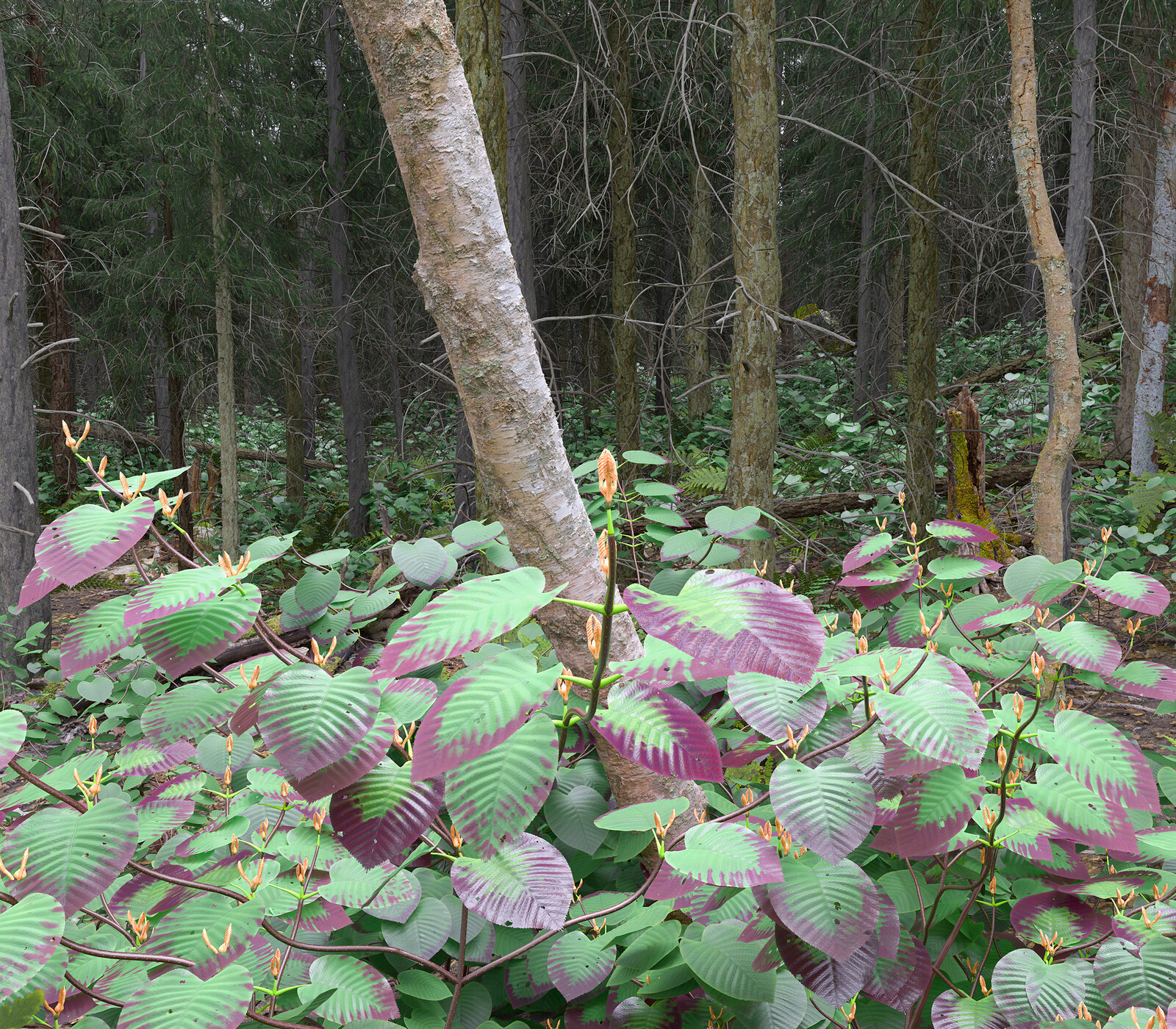Unleashing Ecocide
The paradox of Western supremacy is that it begins with its own. Its practices of dispossession, barbarism, violence, and imperialism are homegrown. With the birth of agrarian capitalism in the sixteenth century, Britain’s private-property relations, competition, and trade in the countryside gave birth to the first form of capitalist imperialism and enclosure. The model of British agrarian, capitalist, and imperialist domination first emerged in Ireland in the late-sixteenth century.1 This new form of colonization, one based on coercive dispossession, was driven not just by the desire for riches and plunder, but also by the logic of expansion based on a domestic market, competitive production, and capital accumulation. Together with military conquest, it implanted a new socioeconomic system buttressed by a new political and legal order.
Since then, successive enclosures of the commons have marked the history of transition from feudalism to capitalism in the Western world. Epistemologically, however, it would be a mistake to understand this transition to capitalism as the civilizational benchmark it has been made out to be. Rather, the orchestrated enclosure of the commons has been a precondition for unleashing the logic of ecocide. Ecocide refers to the large-scale destruction of human and non-human nature or socio-ecological systems by human agency. This social practice becomes institutionalized and part of the logic of a dominant mode of existence. As a category, we can use the term “ecocide” in a presentist way to look back and make sense of different forms of brutish colonialism and capitalist imperial domination that obliterated the conditions enabling the reproduction of human and non-human life. Yet such a category could never capture or express the full import of the impact of imperial ecocide on life. Nonetheless, it does assist our journey back into historical time to understand the entanglements of natural and social relations within imperial modes of relation, and highlights a dialectic of erasure and struggle for life in both the past and present.
Enclosures and ecocide in the peripheries, outside the West, does not begin with British agrarian capitalist imperialism. Rather, it follows two other vectors of imperial destruction, each of which were driven by different expansionary dynamics: the Spanish imperial domination of the Americas and the United Province (Dutch) imperial domination of the Atlantic and the East. The Columbian moment brought horror, genocidal violence, disease, and civilizational destruction in the Americas. While anthropologists seek to temper this narrative with the divisions and involvements of the indigenous in their own conquest, these facts do not detract from the logics of accumulation and the early forms of colonial extractivism of bullion, land dispossession, and slavery that were established in their wake.
If the Cerro de Potosí mountain in Bolivia could speak, we would hear its embattled and weeping voice. The march of colonial conquest did not constitute linear progress, civilization, or some higher state of existence. Rather, it was another marker for the beginning of our end, with the simultaneous enclosure and destruction of the life-giving commons. The essential conditions for socioecological reproduction, in the broadest sense, became subject to the mode of conquest orchestrated by the Spanish empire. Yet the surpluses extracted by the Spanish colonizers did not produce capitalism in Spain. Instead, the surpluses were used to buttress and support a dying feudal system. The main beneficiaries of Spanish Empire were the Hapsburg Imperial House and the Papacy, which attempted to salvage elements of the medieval order.
Dutch imperialism, by contrast, as a proto-capitalist empire based on the control of financial networks, leadership of the struggle against medieval systems of rule, war-making capacities, and state-making capabilities of its capitalist oligarchy, was driven by the logic of a militarized mercantilism.2 In 1652, Jan van Riebeeck, the first governor of the Dutch East India Company, arrived at the Cape of Good Hope. The Dutch learned from Spanish modes of domination, but grounded them in a different set of economic imperatives to reproduce mercantile capitalist accumulation. After building the Fort of Good Hope as a symbol of colonial domination and geopolitical power, the Dutch promoted the expansion of settler farming to meet the needs of the Dutch East India Company, systematically unleashing the colonial enclosure of the commons and the logic of ecocidal capitalism in South Africa.
Van Riebeeck and his invading force landed in the Cape with a conception of property relations shaped by the Dutch legal theorist and philosopher Hugo Grotius (1583–1645). For Grotius, property ownership could be secured in both a state of nature and civil society.3 In a state of nature, the natural right of occupatio (expropriation) could be exercised over places—seas, wilderness, and vacant lands. His argument was further refined for the colonial encounter, asserting that indigenous people had not exercised their right to expropriation, and their land could therefore be taken away. Moreover, Grotius argued that appropriation could happen even where another ruler’s jurisdiction already existed. In civil society, meanwhile, the institution of dominium gave the right of property to individuals, the imperial sovereign, and its representatives. Or in other words, the Dutch and colonial society.
Under Dutch rule, colonial settler society extended outward from the Cape to the north and northeast. This expansion of the frontier was violent, barbaric, and genocidal.4 Settler colonial farmers (Trekboers) displaced the San, hunted them down with commandos, and placed bounties on them. San men, women, and children were killed in attacks, while women and child survivors were thrust into servitude on colonial farms. By 1777, the Dutch East India Company officially sanctioned the indiscriminate killing of the San, merely giving warrant to what was already happening. More than one-and-a-half centuries of Dutch imperial rule brought the San as a people, and their conditions for socioecological reproduction, close to extinction. Meanwhile, frontier colonial society marched forward with stock farming, animal grazing, and mining secured through the natural right of occupatio.
The destruction of life-enabling commons in South Africa did not stop with Dutch imperialism. From 1795–1803 and again from 1806–1961, the British inaugurated a second wave of enclosures, ecocidal destruction, and ethnocide against the San through a policy of cultural assimilation. The British also continued expansion into South Africa from the Cape and Natal colonies, waging numerous brutal “frontier wars” with the Xhosa and Zulu inhabitants. For the British, these conflicts were chiefly about expanding the dispossession of the natural commons, subjugating indigenous peoples, and deepening the logic of ecocide. From the standpoint of the subaltern, however, these were wars to defend the commons and a way of life.
With the discovery of diamonds, gold, and coal in the mid-nineteenth century, the British colonized even the “Boer Republics” in the center of the country. This led to a third wave of destruction, spanning from the Great Trek in 1836 to the end of formal apartheid in 1994. As they made their way from the Cape colony and British imperial rule, white farmers—descendants of the Dutch—continued dispossessing land and ecosystems. Shaped by a Calvinist conception of dominating nature, as well as racial hatred for the indigenous San, they extended white supremacist conquest into South Africa’s hinterlands. But while these Afrikaners clashed with British imperialism during the Boer War (1899–1902), their exclusionary nationalism converged with the segregationist practices of British rule.
The formation of ESKOM (a parastatal company responsible for coal-based energy) in 1923 and ISKOR (South African Iron and Steel Industries) in 1927 were part of a modernizing imaginary that locked in cheap labor as the backbone of the carbon-based mineral-energy complex.5 Alongside the expansion of capitalist agriculture and mining, white nationalists dispossessed the African majority of their land through legislative enactments (the 1913 and 1936 Land Acts) and the creation of national parks (beginning with Kruger National Park, still the largest, in 1898).6 When Afrikaners came to power through the National Party in 1948, industrialization intensified, and through the high apartheid of the 1960s, grand designs of “separate development” created “Bantustans” to ghettoize the African majority as a cheap labor source. In relation to the white centers of South African capitalism, these “separate” areas were articulated in a manner that gave them a contingent existence.
The fourth wave of destruction of the life-enabling commons is now spearheaded by African nationalism (1994–present). Visions of modernity, catch-up industrialization, carbon capitalism mark this imaginary, ironically expressing a continuity with modernizing Afrikaner nationalism but now imprinted with a productivist Marxism and an embrace of neoliberal globalism. Accordingly, nature still has to be conquered and treated as capital to be exploited, but this time, in order to ensure the deracialization of monopoly capitalism and its deep globalization. Mining (coal, platinum, and strategic rare earths), export-led agriculture, car manufacturing, national park conservation, technocratic urban management, mass consumerism, and the reproduction of the carbon-based mineral-energy complex through offshore oil and gas extraction are all imbricated with the logic of ecocidal capitalism.7
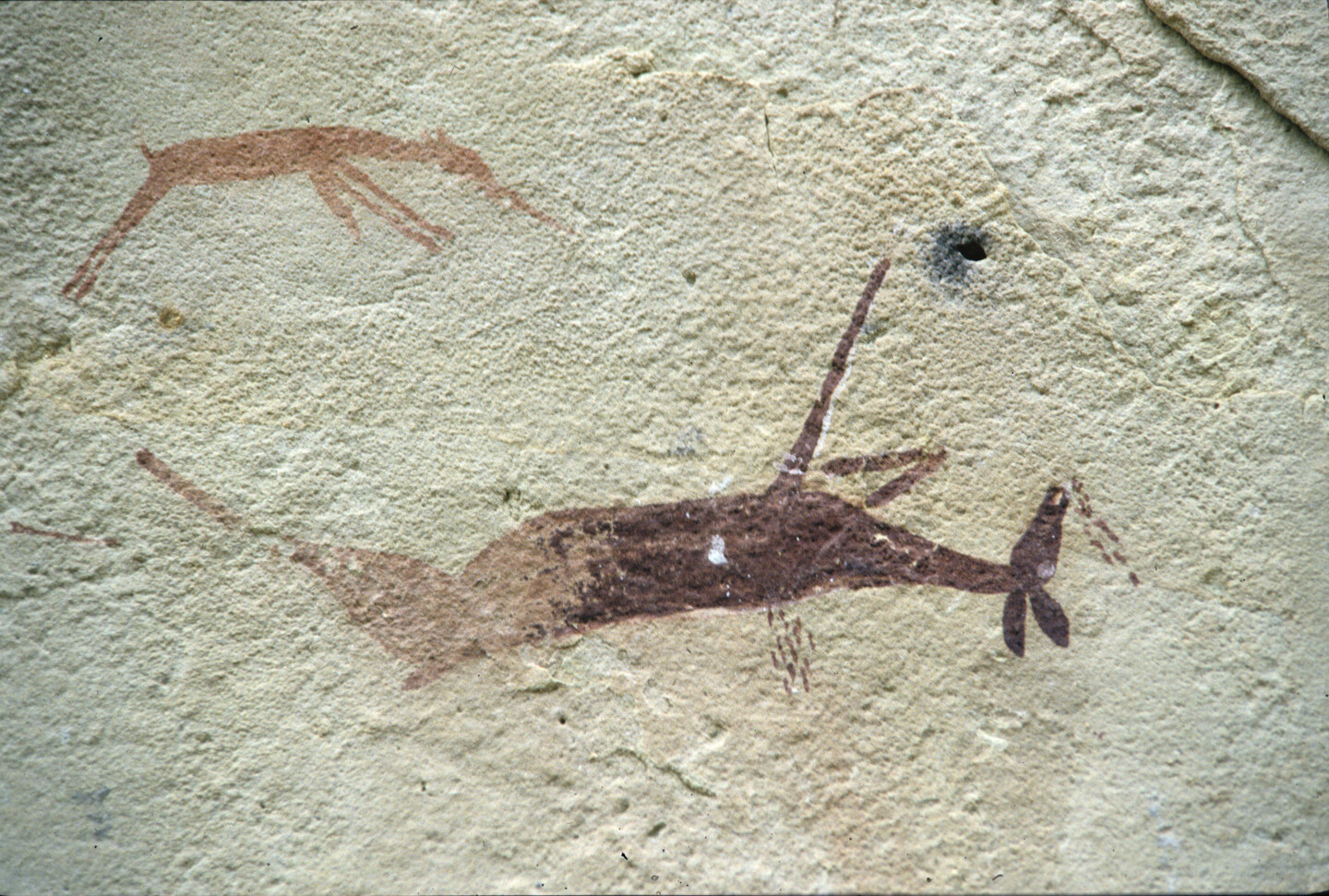

San rock painting: the upside-down antelope symbolizes death. Bethlehem, Dihlabeng District Municipality, Free State, South Africa. Dated to 8000–1900 BCE. Photo by Charles H. Woodhouse, courtesy of World Digital Library.
The Struggle for the Right to Tell
The right to tell has been integral to the struggle for life against waves of enclosures and ecocidal capitalism in South Africa. This right was established in the mists of time when the oldest stories were told in the cradle of humankind, in Southern Africa, long before the colonial encounter. As the archeological record improves, evidence shows San and nomadic hunter-gatherer presence in South Africa for more than 30,000 years. At the same time, the visual history of South Africa begins with the rock art of the San: the first attempt to affirm the right to tell in a manner that could live on through time. Rock art heritage tells the story of a people and their connections with animals and the ecosystems to which they belonged. The San were not an alienated people stuck in a divide between humans and nature. Rather, they were custodians of the natural commons and they did not understand themselves as superior to other life-forms. Two-dimensional depictions of animals, the trance dance, the shaman, and abstract renderings of the human form imprint the history of rock art. There are panels that depict complex interrelations and unique images. Each rock art painting or engraving is inlaid with a treasure trove of information and insight. This living record exists in different parts of the country, a cornucopia of San imagery and memory, in at least 15,000 known sites.8
Despite living through the horror of genocidal violence, slavery, and conquest, these peoples continued an oral tradition of telling stories and keeping alive an indigenous worldview. They kept alive the spirit of struggle against erasure, on the other side of ecocide. Within the colonial encounter, these peoples were the first to defend the right to tell their story. Paintings in different parts of the country also bear testimony to this as they document and tell about the presence of colonialists for future generations. What is considered “contact period” rock art depicts horses, rifles, ox wagons, and people in clothing. The rock art records the colonizer in what we now know, with the advantage of hindsight, to be a deadly intrusion. At the same time, the expansion of the frontier produced an art of erasure, the dialectical opposite of art: a story of romantic, free, and uninhabited landscapes; an exotic African paradise.9 Such art confirmed a colonial right to see, but revealed a gaze schooled in a racist and ecocidal optic. The leitmotif of colonial art fictionalized the frontier as terra nullius. Art, here, was used as a justification for expansion and colonial claims. But in reality, it only existed through violence, barbarism, and theft.
The struggle against racist ecocidal erasure and for the right to tell in South Africa is also imbricated in the history of photography. All before it found a wider critical social role, Walter Benjamin problematized photography’s glorification of the wealthy, the narcissism of the ornate family album, and choreographed stills within studios. But he does not reckon with the imperial expansion of photography to the peripheries.10 In the South African context, photography had a mimetic impact in white colonial society, in which the colonial outpost was about receiving and living imperial culture. However, in the early-twentieth century, photography became implicated in native studies, and has been referred to as a “salvage ethnography” in that it depicts pristine and romantic tribal life before being overtaken by “civilization.”11 With the rise of an urban black working class in the 1940s and 1950s and a growing formalization and resistance to apartheid, however, photography also became an important medium and tool to represent the truth of racial oppression. The politics of photographic representation are shaped by this graphic retelling of oppression and resistance, and its humanist optic. The history of photography in South Africa is implicated in the lived experience of the other side of ecocide.
The Ark of South African Life and Collective Pain
Combined with a poignant caption, photography explores the conditions of life like a crime scene. Our overheating world today is such a crime scene. But who pieces together the evidence? We live in a world where everything can be photographed; every part of our lifeworld can be seized by a shutter and reproduced through the marvel of the pocket-sized digital or smartphone camera. This technology has a different optical unconscious: miniaturized lenses, apertures, light captured on pixels and transmitted through bytes of information. With digital cameras or smartphones available for mass consumption, millions of people can document the climate crime scene. This is the crux of the Ark of South African Life, a project that seeks to democratize who can tell, and takes photography to the frontlines of telling the story of ecocidal extinction.
The Southern African region, including South Africa, is one of ten hotspots in the world that are heating at twice the global average. As the world moves closer to an average global increase of 1.5℃, the increase in Southern Africa is 3℃. In the decade to come, Southern Africa could potentially become so hot and dry as to be unlivable. The continuation of carbon capitalism and the ongoing use of oil, coal, and gas risks displacing at least 200 million poor Africans in coming decades. This will be compounded by feedback loops linked to extreme weather shocks—longer droughts, heatwaves, flooding, increasing wildfires, cyclonic activity, and storm surges. And it has already begun.
The Ark of South African Life is not inspired by a biblical fable, nor is it an architectural marvel. Rather, it is a people’s archive, a repository, a place of digital memory to enable the right to tell, to express itself. This telling is different from the war photography that Susan Sontag, in her Regarding the Pain of Others, invites us to humanize with an ethics of seeing.12 The Ark allows anyone living in South Africa to tell the world what is endangered and at risk with further heating. It documents a common condition of collective pain, rather than the pain of others. It is not just a humanized ethics of seeing, like Sontag’s, that we need to deploy to understand these images. Rather, with socioecological awareness and a post-Anthropocentric sensibility, they invite us to revisit what it means to be human-in-nature.
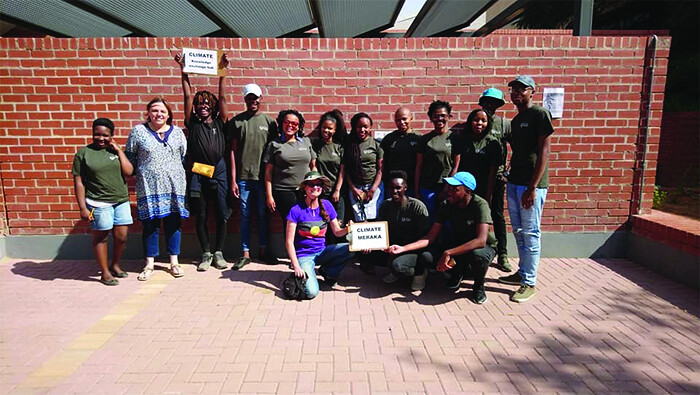

“This is a story of the Climate Mereka hosted at the University of the Free State in September 2019. This solidarity and youthfulness is something we need to save.” Photo by Tshiamo Malatji, courtesy of the Ark of South African Life.
A photograph by Tshiamo Malatji celebrates the power of sharing knowledge about the worsening climate crisis during a Climate Mereka, a gathering to affirm the right of passage from old ways to new ways of living. The photograph expresses itself as a “species of rhetoric” (as Sontag suggests) to confirm the salience of uniting the many in power and in struggle. It’s a telling about a “we,” an agent of history, a conscious humanity affirming its ethical choice to act in solidarity for the benefit of all. This constitutes a rupture with war photography, which invites ethical action from the viewer against the perpetrators. Instead this image declares that an alternative anthropos history is already being made. Climate Mereka is about surviving and bringing forth the best of who we are in the constitution of an intergenerational emancipatory subjectivity on the other side of ecocide.
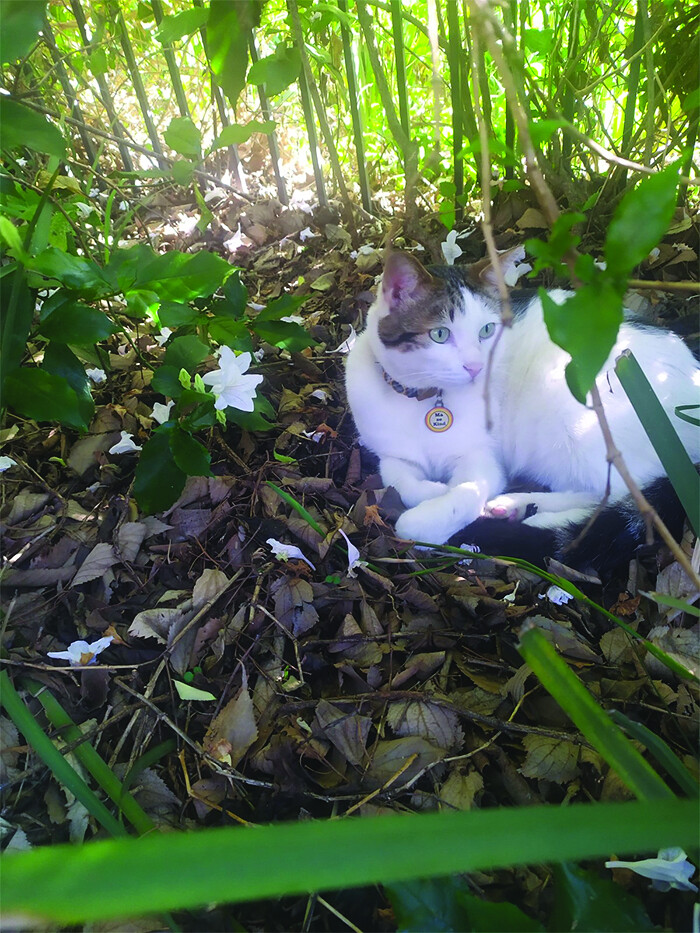

“Two of the many things I cherish, my cats and my garden. The impact that climate change is having and will have on this small aspect of my life is terrifying.” Photo by Soraya Patel, courtesy of the Ark of South African Life.
By documenting a double subject—a cat in a garden—Soraya Patel is affirming an interspecies and ecosystemic bond beyond human exceptionalism. The photo decenters the human while affirming a deeper ecological connection. During the Vietnam War, Sontag recognized that Americans were incited by vivid television updates and color photography, bringing the immediacy of militarized violence into their everyday lives. Soraya Patel connects the terror of climate change impacts on this small part of her life to a larger and scarier picture. But will her fear, her pain of loss, move everyone? Is the world ready to recognize that we are not exceptional, that living in harmony with other species, within ecosystems, is the ethical and conscious choice we must make in order to survive? The telling of being a human, a conscious socio-ecological being—one that is different from homo economicus or the greedy, possessive, self-obsessed individual of the neoliberal market place—is a powerful critique of what exists.
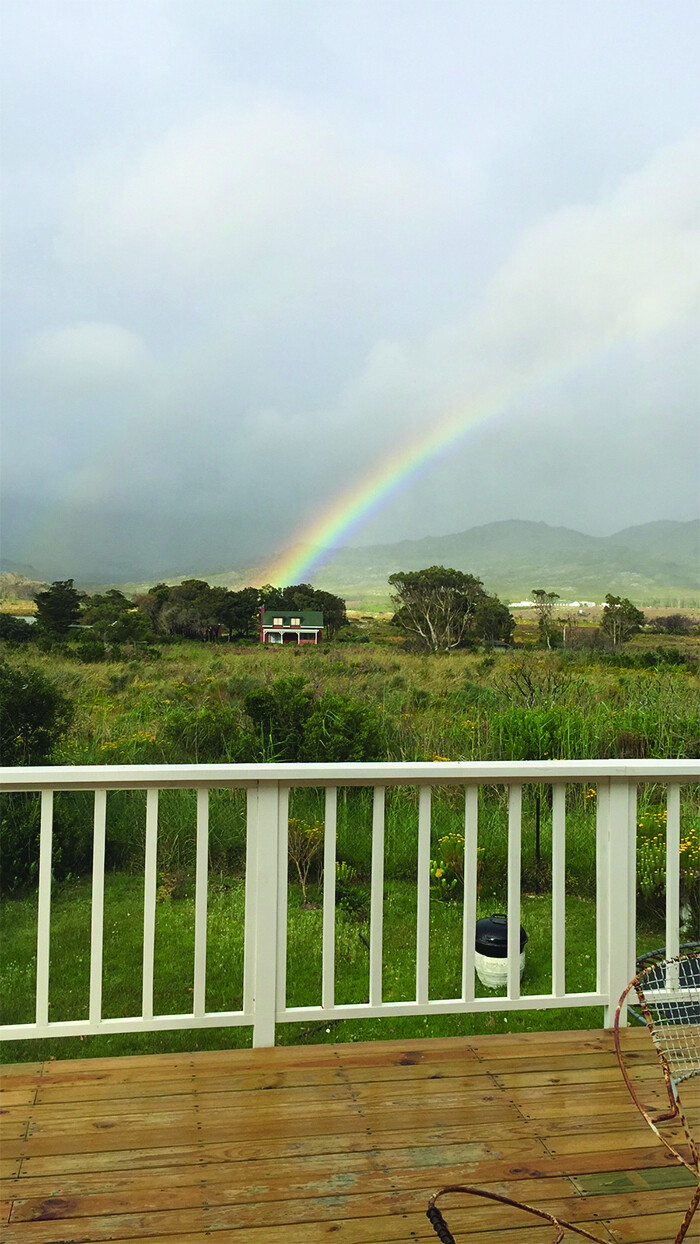

“The beauty of this world must be celebrated even in stormy weather.” Photo by Ferial Adam, courtesy of the Ark of South African Life.
Ferial Adam offers us a less romantic view of non-human nature, unfolding a dialectic between stormy weather and the beauty of the rainbow. One phenomenon is capable of immense destruction, while the other is a benign marvel. At the same time, photography is about documenting history, as Sontag reminds us. War photos, like those from the Spanish Civil War or Sarajevo, capture a moment in the past. There are different temporalities at work in this photograph and the archive of the Ark. They are about an arriving threat—an unknown and uncertain future. They tell of a looming danger that can erase the lifeworld of the present. These images also reveal the clash of the accelerated temporalities of ecocidal capitalism and geological time. There is a layered temporality in these photographs and the planetary experience they are part of, beyond the historical moments of horror implicated in war photographs.
The Ark is about more than collective pain. It affirms a socioecological consciousness about being human, about natural relations we cannot and should not conquer but with which we must co-exist. But what does the Ark tell us about those collecting the evidence of our planetary crime scene? For Sontag, the war photojournalist was courageous and willing to sacrifice everything, including their own life. They did not want to just “shoot” the perfect image at the right moment and profit from this; there was a conscious ethic of care informing the practice of war photojournalism. Similarly, the contributors to the Ark are awakened. They have an appreciation of the danger of the climate crisis and are willing to tell those around them, and the world more broadly, that everything is in danger. These photographs take a stand against an anticipated collective pain and suffering; they celebrate interspecies, intergenerational, and ecosystemic connections. But most importantly, they affirm a solidaristic agency for change from below. In a sense, they are as courageous as war photojournalism, even if they have not yet experienced the intensity of the harms to come.
The Last Demand of the Subaltern: Climate Justice Now!
The other side of ecocide thrives in the fertile ground of radical socioecological theory. It furnishes a more coherent imaginary, resources of critique, and emancipatory alternatives to confront the destructive logic of ecocidal capitalism. At its core, such theory stands against oppression in all its forms, and therefore its conception of emancipation affirms humanity in its interconnections with non-human nature. A shorthand for this intellectual framework would be “global emancipatory ecology,” premised on the idea that we are socioecological beings and therefore thrive most through a non-antagonistic relationship to the life-enabling natural commons. Karl Marx even placed natural relations within his anthropological understanding of the human, his theory of historical materialism, his critique of capital, and his break with a linear conception of productivist progress. Today, the last demand of the subaltern at the intellectual and political barricade is not communism but rather climate justice now. It is a demand being amplified by the “1 Degree Celsius” movements rising since 2016 on a planetary scale, including Standing Rock, Extinction Rebellion, #FridaysForFuture, and more.
The last fight, the last demand for climate justice now, has an idealistic ring to it. It connotes the end of suffering and pain. It barges in and unhinges the normalcy of technocratic climate discourse. However, the irony of this moment is that carbon capitalism itself has necessitated this fervent and necessary demand. Its ecocidal temporalities, including accelerated carbon dioxide emissions over the past two decades, dwindling fertile soils, unprecedented biodiversity loss, peak water, and growing mass hunger are all clashing with the temporalities of Earth’s climate system. The last demand of climate justice now is not a guarantee of life but a call to give us a chance of survival in the horrific world that is to come. Deep and just transitions based on decarbonization, socioecological systemic transformation, and a democratized state are within reach if the climate emergency is taken seriously. This is the clarion call of the South African Climate Justice Charter handed over to South Africa’s parliament on October 16, 2020. Like the Ark of South African Life, it comes from a place of shared telling, inter-subjective uncertainty, fear, and solidaristic agency. It is about affirming human and non-human life now by working to stop the last great dispossession of the natural commons.
Ellen M. Wood, The Origin of Capitalism: A Longer View (London and New York: Verso, 2002).
Giovanni Arrighi, “The Three Hegemonies of Historical Capitalism,” in Gramsci, Historical Materialism and International Relations, ed. Stephen Gill (Cambridge: Cambridge University Press, 1993), 148–185.
Edward Keene, Beyond the Anarchical Society: Grotius, Colonialism and Order in World Politics (Cambridge: Cambridge University Press, 2002), 54–56.
Mohamed Adhikari, The Anatomy of a South African Genocide: The Extermination of the Cape San Peoples (Cape Town: UCT Press, 2011).
ESKOM was originally founded in 1923 as ESCOM, for Electricity Supply Commission, and was also called EVKOM for the Afrikaans Elektrisiteitsvoorsieningskommissie. In 1987 the name was changed by combining these two acronyms into ESKOM. I use ESKOM in this text as that is what it is known as today.
The idea of conservation inherent to these parks was informed by a human-nature binary that is deeply entrenched in the Anthropocentric worldview of white nationalism, in which Blacks and nature were interchangeable.
South Africa is the eleventh-highest emitter of carbon dioxide in the world, with a carbon intensity higher than any of its BRIC partners due to its use of coal in power generation.
James D. Lewis-Williams, San Rock Art (Auckland Park: Jacana Press, 2011).
Michael Godby, The Lie of the Land: Representations of the South African Landscape (Cape Town: Iziko Michaelis Collection, 2010).
Walter Benjamin, On Photography (London: Reaktion Books, 2015).
Darren Newbury, Defiant Images: Photography and Apartheid South Africa (Pretoria: Unisa Press, 2009).
Susan Sontag, Regarding the Pain of Others (London: Penguin Books, 2003).
Survivance is a collaboration between the Solomon R. Guggenheim Museum and e-flux Architecture.
